Phillies Franchise History: Greatest Player to Wear Each Number

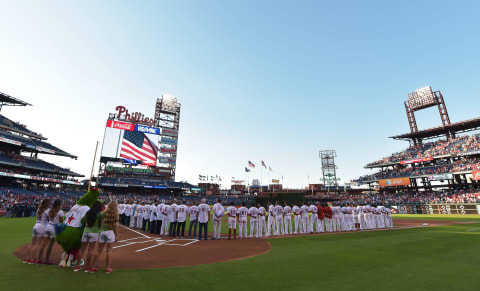
Which Phillies players stand out as the greatest to wear each number?
Over 136 seasons the Phillies have had more than 3,000 players and 54 managers come through the major league clubhouse. They’re one of the oldest franchises in professional sports, and are filled with rich history.
With such a rich history it’s possible to collect the greatest players to wear each uniform number in franchise history.
Saying that, there are some guidelines set. For one, each number needed at least five players that have worn it for it to be included. For example, Pat Neshek is the greatest to wear #97, but he’s the only one to, so was not included on the list.
Longevity wearing the number came into play, so if a player wears number two for a year and switches to something else, he’s likely not going to be recognized for wearing number two. That comes into play for many of the pre-World War II players who wore multiple numbers in their career and changed them every year.
There’s also a slippery slope when talking about “the greatest player” to wear a number. Had Barry Bonds worn number 25 for a day, he wouldn’t be on this list. That’s where longevity comes back into play.
There had to be a player worth recognizing for the number, and not just the best player among a heap of journeymen. For instance, if we recognized the greatest player in franchise history to wear number 52, Rickey Bottalico would be that guy. No offense to Rickey Bo, but if he weren’t on the pre/post game shows, few would know or remember him.
Here are the greatest Phillies to wear each uniform number in franchise history, as presented by the entire staff at TBOH.
1. team. 6. . . . Richie Ashburn
Largely overlooked by bigger names (Willie Mays, Duke Snider, Mickey Mantle) of his era, Ashburn was an all-star right out of the gate in his rookie season of 1948, hitting .333 with 32 stolen bases. He was the catalyst of 1950 “Whiz Kids”, hitting .303 and leading the league in triples with 14.
A five-time All-Star with the Phillies, Ashburn hit over .300 eight times and the league in batting average in 1955 and 1958. He also led the league in walks three times and on-base percentage three times as a Phillie.
Ashburn accumulated 2,217 hits and a .311 average in 12 seasons with the Phillies. Defensively, Ashburn covered a lot of ground and had 10 or more assists in 11 of his 12 seasons with the Phillies.
Following his days with the Phillies, Ashburn played two seasons with the Cubs and was an All-Star in his final season in 1962 with the expansion New York Mets.
Ashburn followed his playing days teaming up with the legendary Harry Kalas to form one of the top announcing duos in all of baseball. Known by many as “Whitey,” Ashburn was denied the top honor in baseball until the Veteran’s Committee elected him in the baseball Hall of Fame in 1995 alongside of Mike Schmidt.
Ashburn passed away on September 9, 1997, at the age of 70 following a broadcast of a Phillies game versus the Mets.
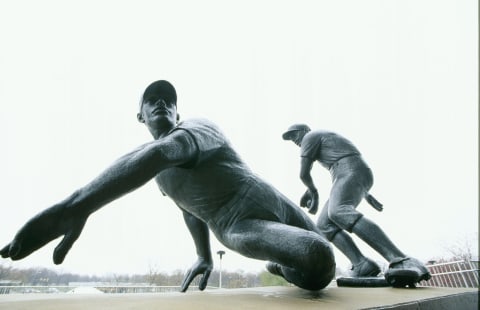
. . . Granny Hamner. 2. team. 6
Despite wearing eight different numbers over 16 seasons with the Phillies, Granny Hamner was known for wearing number two for the majority of his career. A member of the Whiz Kids during the 1950s, Hamner started at shortstop and second for Philadelphia, hitting .263 with 1,518 hits, 103 home runs, and 705 RBI.
Hamner joined Philadelphia at the age of 17 with players serving in World War II.
Earning three-consecutive All-Star selections in the early 50s, Hamner had 510 hits in that three-year stretch. He earned MVP votes six times, and finished sixth in 1950 when the Phillies won only their second National League pennant since their inaugural season in 1883 as the Quakers.
Despite Hamner hitting .429 with a 1.181 OPS the Phillies were swept by Yogi Berra and the Yankees during the World Series. That series would be the only playoff appearance for Hamner and the Whiz Kids, and begin a 27-year playoff drought.
Two years after losing the World Series, Hamner was named the captain of the Phillies, a title that no longer serves a role in baseball. He’d be inducted onto the Phillies Wall of Fame in 1987, nearly 30 years after his final game in Phillies red and grey.
Hamner is eighth in Phillies history with 5,772 at-bats, 10th in singles with 1,083, and tied with Del Ennis for first in double plays grounded into with 171.
Few others who wore the number two had careers that matched the productivity and longevity of Hamner in Philadelphia. Not Ben Revere, not Rod Barajas, and, at least not yet, not J.P. Crawford.
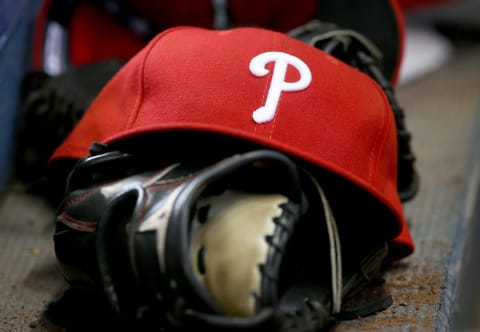
6. . . . Chuck Klein. 3. team
As mentioned earlier, players in the pre-World War II era often changed their numbers, and that’s the case with Chuck Klein, one of the great hitters in franchise history. While he wore eight different numbers over 15 seasons with Philadelphia, he wore number three during his 1932 MVP season.
Klein is the franchise’s all-time leader in slugging percentage and OPS, and rates in the top-10 for career WAR, batting average, runs, hits, total bases, doubles, home runs, RBI, and WPA.
Three of Klein’s seasons are among the franchise’s top-10 seasons for hits, and for 50 years he held the franchise record for home runs in a season. He’s currently the single-season leader in doubles (59) and RBI (170), and his 7.8 WAR in 1933 has only been beaten by Dick Allen.
Klein’s first five complete seasons is one of the great stretches in baseball history. During that stretch, he had 200 hits five times, led the league in home runs four times, led the league in runs scored three times, and had three consecutive top-two MVP finishings.
Because he had no official number that lasted through his career, the Phillies recognize Klein with an era-style “P,” among the retired numbers, similar to Grover Cleveland “Pete” Alexander.
In 1980 the Phillies inducted Klein onto the Wall of Fame, making him just the fifth member and the fourth player after manager Connie Mack.
Klein was also inducted into the Baseball Hall of Fame in 1980, 22 years after his death, by the Veteran’s Committee.
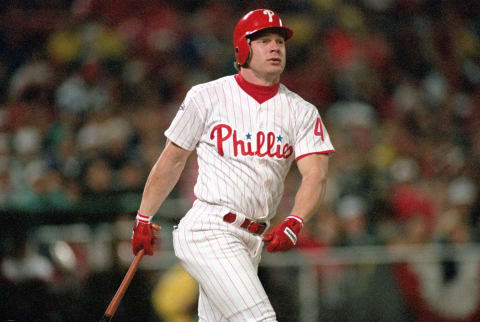
4. team. 6. . . . Lenny Dykstra
Lenny Dykstra’s relationship with baseball is one of the murkier ones in the sport. A legend on the field, Dykstra has been legendary off the field for some unflattering instances. His latest involving an Uber driver only grew the tale of Dykstra following bankruptcy and prison time for fraud.
On the field, he was an All-Star outfielder with MVP credentials who was a catalyst for the 1993 Phillies. Hitting .305 for the National League pennant club, Dykstra led baseball in hits, runs, and walks while adding 44 doubles and 19 home runs, and finished second in the MVP race to Barry Bonds.
His solo home run in the 10th inning of game five of the NLCS sent Philadelphia back to the World Series for the first time in 10 years.
His bat was just as valuable in the World Series against Toronto when he hit four home runs in six games with a .348 batting average.
Retiring after eight seasons with the Phillies, Dykstra is the franchise’s all-time walks leader with 129 and third in position player WAR for a single season behind Mike Schmidt and Chase Utley.
The former Met solidified his playing legacy in Philadelphia with a career .289 batting average and 829 hits in 734 games wearing Phillies red, white, and blue.
There’s very little competition for who is the greatest Phillie to wear number four with Scott Kingery, Andres Blanco, John McDonald, and Pete Orr being the most recent wearers of the number.
Hopefully Kingery can become the next great number four in Phillies history, but for now, it’ll be Dykstra leading the way despite his issues.

team. 6. . . . Pat Burrell. 5
One of the great Phillies home run hitters of all-time was an easy pick for the greatest player to wear number five in Phillies history, and the man who wore it the longest, Pat Burrell.
One of the better number one overall picks in the last 25 years, Burrell was the first player from the 2008 World Series team to be inducted onto the Phillies Wall of Fame.
Arriving in the big leagues less than two years after being drafted, Burrell finished fourth in the Rookie of the Year voting. He was one of the lone power bats in the Phillies lineup during the raw early 2000’s, missing the playoffs in his first seven seasons. The latter part of his career culminated with the franchise’s second championship, a fitting end to Burrell’s career in Philadelphia.
Burrell’s 251 home runs are fourth on the Phillies all-time list behind Mike Schmidt, Ryan Howard, and Del Ennis. Burrell’s 827 RBI are 10th all-time in franchise history, and his 785 walks are fifth behind Schmidt, Bobby Abreu, Richie Ashburn, and Roy Thomas.
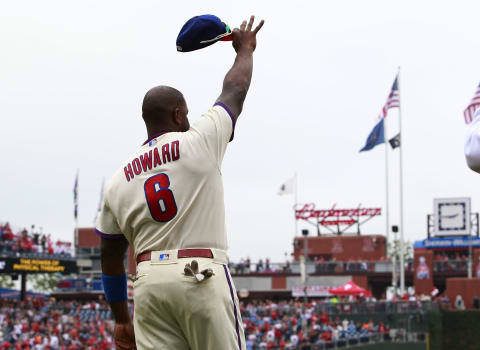
6. team. 6. . . . Ryan Howard
Number six is the “Big Piece” Ryan Howard. Howard played all 1,572 professional games with the Philadelphia Phillies, racking up 382 home runs, second in franchise history to only Mike Schmidt.
The three-time All-Star started his career off as the NL Rookie of the Year after batting .288 with 22 homers. He followed that year with one of the most dominant offensive seasons in MLB history.
In his MVP year, Howard smashed 58 bombs, batted .313 drove in 149 runs and an amazing OBP of .425, and posted six straight top 10 MVP finishes from 2006-2011.
Playing all 162 games, he led the league in home runs and RBI during the 2008 World Series season. He had six consecutive seasons with 30 home runs, 100 RBI, and hit .274 during the span, making him one of the most feared sluggers of his era.
However, Howard’s career took a downhill slide after a torn Achilles in 2011 on the final play of the NLDS against San Francisco. He never returned to true form, batting sub .230 in each of his final seasons and never slugged over 25 home runs.
In the end, Howard was the last player standing from the 2008 team on the Phillies, playing his final game in 2016. He’s since signed minor league deals with Atlanta and Colorado, but he never made an appearance with the big league clubs hitting just .189 in 27 games with their AAA clubs.
Despite his downfall, Howard remains one of the great players in franchise history. Unfortunately he likely falls short of Cooperstown sitting at 67th on the all-time home run list, but he’s a Wall of Fame player and potentially sees his number retired one day.

. Maikel Franco. 7. team. 6. .
If this list were the greatest player in baseball history to wear number seven for the Phillies, Kenny Lofton would be a shoo-in for this. Unfortunately, Lofton only played one year, admittedly while still playing Hall of Fame caliber baseball.
When longevity and success come into play, the only player worth mentioning is Maikel Franco. Maybe a month ago those words wouldn’t have been said, but Franco appears to have found himself as a player. Hopefully, it’s for real after he’s given us these types of flashes for years.
It hasn’t been easy for Franco from day one as the organization’s top prospect coming up to play a position that hasn’t been filled since Scott Rolen.
After being benched by Gabe Kapler during the 2018 season Franco has erupted at the plate and been one of the hottest third basemen in baseball. He’s having fun playing the game again, and is on pace to set career highs across the board.
This season he’s on-pace to set career-highs in home runs and potentially batting average, just four points short of his .280 mark from 2015.
In just over 500 games for the Phillies Franco has hit .253 with 85 home runs. The numbers don’t blow you away, but with his current upward trend he could easily double that home run number in a couple of years.
This is all about projection with Franco, who the Phillies hope is a major piece of their future. If not, then the organization could be forced to look elsewhere very soon.
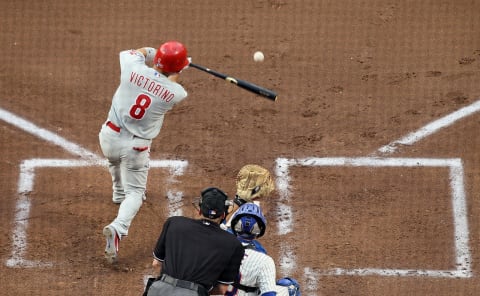
8. team. 6. . . . Shane Victorino
As we have highlighted before, the number eight is one of the greatest numbers in terms of who has worn it in Phillies history. You have a legitimate argument for Juan Samuel, Bob Boone, and Tony Taylor as the greatest Phillies to wear the number, but the Flying Hawaiian takes it for the time being.
A Rule 5 pick up turned away from by the Dodgers, Victorino evolved into one of the great defenders in Phillies history. He won three consecutive Gold Gloves while patrolling center field while providing electric speed and hitting on a consistent basis.
Twice Victorino led baseball in triples, and he received MVP votes in each of those campaigns.
Following Aaron Rowand’s departure in 2007 Victorino became the everyday center fielder in Philadelphia after platooning with Jayson Werth and Bobby Abreu the years prior.
Victorino hit .293 during the 2008 championship season with 14 home runs, eight triples, and 36 stolen bases, and was an electric spark in the lineup.
During the playoffs he provided an even bigger spark with one of the great moments in franchise history, a grand slam off C.C. Sabathia in the NLDS at home.
Unfortunately, Victorino was one of the first players from the 2008 core to go once the team entered their rebuild, and he began his career with the Dodgers following a trade in 2012. He picked up a second World Series ring in Boston, and capped off his career with the Angels before retiring as a Phillie this summer.
It’s a close one between the four franchise legends, but Victorino walks away as the greatest to wear number eight, especially since the organization has unofficially retired it since 2012.
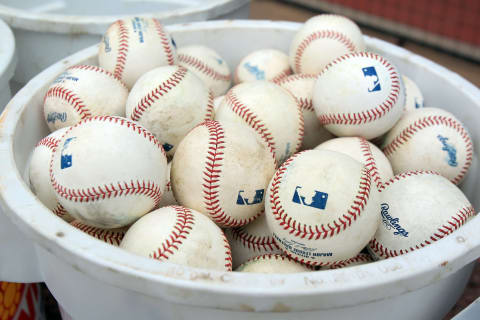
9. team. 6. . . . Von Hayes
The Phillies acquired Von Hayes in what has become the famous “five-for-one trade” with the Cleveland Indians in 1982. The Phillies gave up Manny Trillo, George Vukovich, Jay Baller, Julio Franco and Jerry Willard. With Hayes never produced at the caliber that many thought he needed to justify such a trade, he did have quite a few good seasons in Philadelphia.
Hayes hit just .265 with six home runs and 32 RBI in 1983, but improved to .292 with 16 home runs, 67 RBI and 48 stolen bases in 1984. He was eighth in the MVP voting in 1986 when he lead the league in doubles and runs scored, while hitting 19 home runs and driving in 98.
He hosted a 21 home run 84 RBI, 121 walk season in 1987 and his only All-Star appearance in 1989, when he set a career high 26 home runs.
Hayes suffered a broken arm after being hit by a pitch by Reds’ Tom Browning on June 14, 1991. Clearly never recovering from the injury, Hayes didn’t hit a home run that season and retired after another sub-par season with the Angels in 1992.
Hayes set a record in 1985 by becoming the first player to hit two home runs in the first inning. One of those hits was a grand slam in a 26-7 rout of the Mets.
In all, Hayes hit .272 with 124 home runs, 1,173 hits and 202 stolen bases in nine seasons with the Phillies.
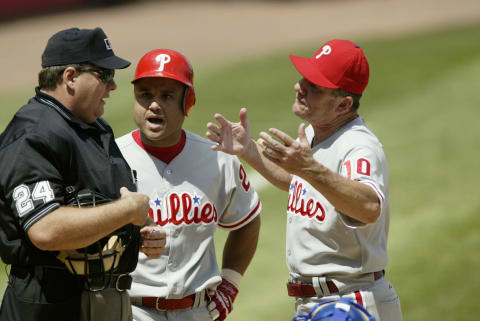
10. team. 6. . . . Larry Bowa
It was down to Larry Bowa and Darren Daulton for the greatest to wear the number 10 in Phillies history. While Daulton was a tremendous leader and one of the most beloved athletes in the history of Philadelphia sports, he can’t surpass the great Larry Bowa.
Since joining the Phillies in 1970 Bowa has been a staple in the organization as a player, coach, manager, and front office voice. A Gold Glove infielder, Bowa was a veteran on the 1980 World Series team that knocked off George Brett and the Royals.
Few people in baseball can say they spent the majority of the last 48 years with one organization.
Playing 12 of his 16 seasons Philadelphia, Bowa hit .264 with 1,798 hits, 206 doubles, and 288 stolen bases while playing 1,739 games, the fourth-most in franchise history. He won two Gold Gloves and made five All-Star teams before retiring in 1985, and his 16.8 dWAR is the third-best in franchise history behind Mike Schmidt and Chase Utley.
Fast forward 15 years and Bowa became the team’s manager in the middle of a lengthy rebuild. In four years as the skipper the Phillies won at least 80 games but never won the division or clinched a playoff spot.
Bowa returned to the Phillies dugout as their bench coach under Ryne Sandberg and Pete Mackanin, but was not retained as a coach by Gabe Kapler. The 72-year-old Bowa is now a senior advisor to general manager Matt Klentak.
Few people in baseball can say they spent the majority of the last 48 years with one organization. He’s one of the all-time people in this organization and is undoubtedly the greatest to wear 10.
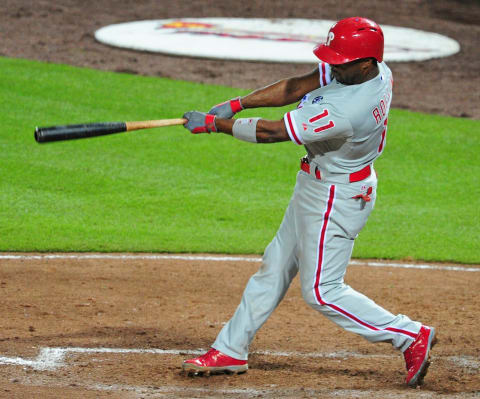
6. . . . Jimmy Rollins. 11. team
It doesn’t get much better than the Phillies all-time hits leader for the greatest player to ever wear number 11. Jimmy Rollins may go down as the last player in club history to wear the number, but that’s a debate for another day.
Rollins joined the Phillies in 1996 as a second-round pick out of high school and quickly rose to the major leagues. After making his debut in 2000 Rollins burst onto the scene under Larry Bowa in 2001, finishing third in Rookie of the Year and 17th in the MVP race.
As a rookie Rollins led baseball with 656 at-bats, 12 triples, and 46 stolen bases. He’d lead baseball in triples four times in his career and won the MVP award in 2007 after declaring Philadelphia “the team to beat.”
The rest is history as the Phillies went from having a catchy slogan to winning five consecutive National League East crowns. Rollins led the way in 2008 with a career-high 47 stolen bases while adding 154 hits.
Rollins would play over 2,000 games in Philadelphia, winning four Gold Gloves, and MVP, three All-Star appearances, and a championship.
A borderline Hall of Fame player, Rollins goes down as the greatest shortstop and one of the best hitters in Phillies history.
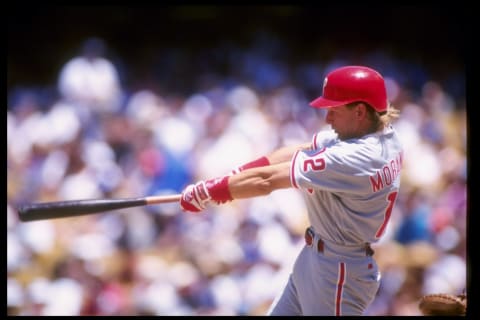
6. . . . Mickey Morandini. 12. team
No player’s name became more synonymous with broadcaster Harry Kalas than Mickey Morandini. The unique annunciation is unforgettable, as were plays like this made by Morandini.
Morandini’s unassisted triple play was the first in Phillies history, only to be repeated by Eric Bruntlett.
A fifth-round pick in 1988 Morandini joined the Phillies just two years later and never looked back. Morandini maned second base for most of the 1990s and had 105 hits for the 1993 team in route to a pennant win.
The infielder made just one All-Star appearance in his career, earning the honor in 1995, a season where he didn’t put up his best all-around numbers by October. In 127 games he hit .283 with 140 hits in 127 games, 47 of those hits being for extra bases.
Morandini was later traded to Chicago for Doug Glanville, but returned in a deal with Montreal in 2000. After 91 games the Phillies would flip the second baseman back to Canada after making a deal with Toronto for Rob Ducey.
Morandini went on to coach in the minor leagues and for Philadelphia as a first base coach under Pet Mackanin. After Gabe Kapler didn’t retain Mackanin’s coaching staff Morandini moved into an ambassador role with the team.
You won’t find Morandini on any big lists or hidden in the all-time stats, but he was a critical piece for Philadelphia in the 90’s and his impact as a coach will carry through the organization for years.
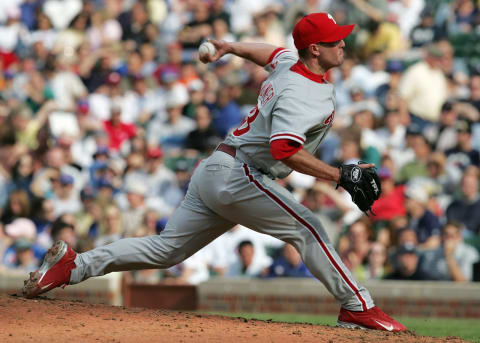
. . Billy Wagner. 13. team. 6.
One of the greatest closers of all-time had a brief stint with the Phillies during a 16-year career that could end in Cooperstown. Wagner has 422 career saves, the sixth-most all-time and more than Hall of Famers Rollie Fingers and Dennis Eckersley.
Wagner barely stuck on the baseball writer’s ballot, and received 11.1% of votes on his third turn through.
After nine seasons in Houston Wagner was traded to Philadelphia for Ezequiel Astacio, Taylor Buchholz, and Brandon Duckworth in November 2003. Wagner was coming off a fantastic season in Houston where he saved 44 games and led the league with 67 games finished.
Wagner missed most of May and all of August with injuries in his first season with Philadelphia, limiting him to just 45 appearances. He bounced back the following season with an All-Star campaign and a 1.51 ERA. For the second time in three years he led baseball in games finished while saving 38 games.
Wagner’s stay was shortlived after issues in the clubhouse, including Pat Burrell calling him “a rat.” He would go onto play for the Mets for four seasons and was part of New York’s collapse late in 2007 when they lost 12 of their last 17 games.
There’s a slight argument for Freddy Galvis to be classified as the greatest Phillie to wear number 13, but I’m going with the All-Star closer.
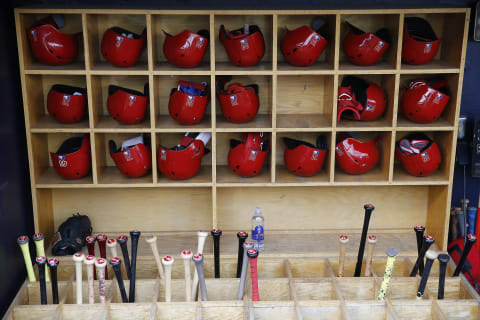
14. team. 6. . . . Jim Bunning
When the Phillies retire a number it has to be for a special player. Few players meant as much to the Phillies in the 1960s as Jim Bunning, who went on to be inducted into the Hall of Fame by the Veteran’s Committee in 1996.
Many great players have worn number 14 in Phillies history: Bunning, Pete Rose, and Del Ennis. Philadelphia retired the number 14 in honor of Bunning in 2001 after inducting him onto the Wall of Fame in 1984.
The first nine years of Bunning’s Hall of Fame career were in Detroit where he won 118 games with 78 being complete games, an unbelievable feat.
Philadelphia acquired Bunning along with Gus Triandos for Don Demeter and Jack Hamilton in December 1963. It was one of the great trades in Phillies history as Bunning went on to continue his great career in perfect fashion.
Bunning threw the first Perfect Game in Phillies history on Father’s Day and won 19 games in each of his first three seasons in Philadelphia.
He finished second in the 1967 Cy Young race to Mike McCormick, who had more than 100 fewer strikeouts than Bunning.
After two years with the Pirates and Dodgers Bunning returned to Philadelphia to finish his baseball career before starting a three-decade career in politics, eventually serving in the US Senate.
Bunning posted three seasons that are on the franchise’s all-time strikeout list, and he’s seventh in team history with 1,197 punch outs.
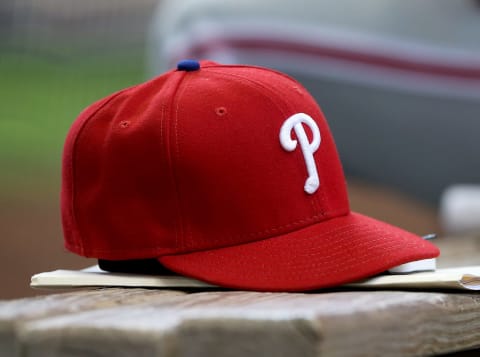
6. . . . Dick Allen. 15. team
One of the great home run hitters of the 1960s and 70s, Dick Allen should be in the Hall of Fame as an all-time great. He’s already been recognized by the Phillies in that fashion, inducting him onto the Wall of Fame in 1994.
Allen made his first impact with the Phillies in 1964 as a rookie, and is impact was felt in a major way. The 22-year-old led baseball in triples, runs, and strikeouts in route to a Rookie of the Year award and a seventh-place finish in the MVP vote. That season he hit .318 with 201 hits, 38 doubles, and 29 home runs en route to the accolades.
Among the all-time great sluggers in franchise history, Allen’s 204 home runs are 10th and his slugging percentage is third behind Mike Schmidt and Jim Thome.
Allen went on to star in three-consecutive midsummer classics and hit 40 home runs in 1966. He received MVP votes in each of his first four full seasons, and consistently led the league with one of the better slash lines of his era.
In October 1969 the Phillies traded Allen, Jerry Johnson, and Cookie Rojas to the Cardinals for Tim McCarver, Byron Browne, Joe Hoerner, Willie Montanez, and prospect Jim Browning.
Originally the Phillies were going to receive Gold Glove center fielder Curt Flood, but he refused to join the team. St. Louis would later send Montanez and Browning to Philadelphia to complete the trade.
Allen would eventually find his way back to Philadelphia in a midseason trade with Atlanta in 1975 that sent himself and Johnny Oates to Philadelphia for Barry Bonnell, Jim Essian and $150,000.
Allen played two more seasons in Philadelphia before finishing his career in Oakland. Nine of his 15 seasons were in Philadelphia, and is 43.1 oWAR is seventh in franchise history.
Among the all-time great sluggers in franchise history, Allen’s 204 home runs are 10th and his slugging percentage is third behind Mike Schmidt and Jim Thome.
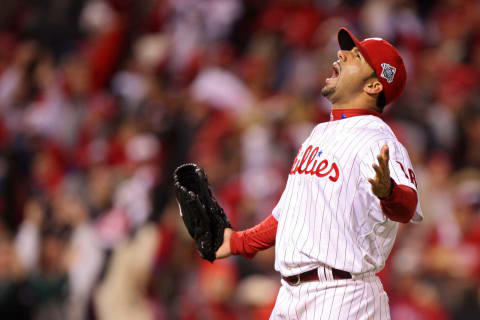
. J.C. Romero. 16. team. 6. .
J.C. Romero slightly edges out Cesar Hernandez as the greatest Phillie to wear number 16 thanks to a ring on his finger. Hernandez could have that chance in a couple of years, but Romero was a major piece to the Phillies winning stretch and championship.
Born in Puerto Rico, Romero played baseball on his native island before attending the University of Mobile in Alabama. From there he was drafted 633rd overall by the Minnesota Twins in 1997 and made his debut at the age of 23 two years later.
Something clicked for Romero in Philadelphia, leading him to a 1.24 ERA in his final 51 games of the 2007 season.
After starting 22 games with a 6.60 ERA Romero was moved to the bullpen by Minnesota and saw immediate success. In 81 games as a reliever in 2001 he had a 9-2 record with a 1.89 ERA for the first place Twins. His next three seasons weren’t as smooth with an ERA just under four and 95 runs allowed in 195.1 innings.
A trade to the Angels didn’t help Romero’s career, but in 2007 he found success with the Red Sox. Romero had a 3.15 ERA in 23 games for Boston before being released in June of their championship season. Philadelphia picked Romero up off the street, and the rest is history.
Something clicked for Romero in Philadelphia, leading him to a 1.24 ERA in his final 51 games of the 2007 season. Success carried over to the Phillies championship season when he had a 2.75 ERA in 81 games. Lefties hit just .102 against him that year, making him the perfect late-game specialist.
Carlos Delgado was the only lefty who had more than one hit against Romero that season, finishing 2-8. Only 11 lefties had a hit against Romero in 98 at-bats during the ’08 regular season.
Romero would lead the Phillies with two World Series wins, including the clinching game five. His time with Philadelphia ended with the perceived emergence of Antonio Bastardo in the bullpen, and the lefty finished his career with Baltimore in 2012.
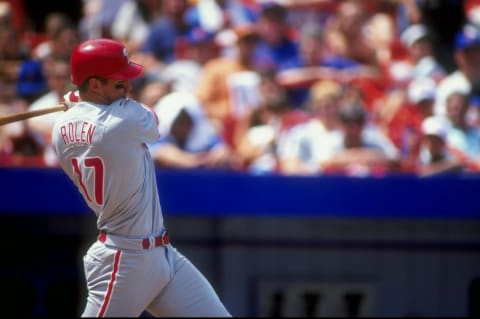
Scott Rolen. 17. team. 6. . .
Scott Rolen fits into a category with Billy Wagner and at one time Jayson Werth as former players who the city has hated unrelentlessly despite their success. Rolen had an opportunity to be the second-greatest third baseman in Phillies history had his relationship with the organization not gone sour.
A second-round pick in 1993, Rolen joined the Phillies as a 21-year-old with a decent glove and solid bat. He won Rookie of the Year in ’92 after hitting .283 with 35 doubles, 21 home runs, and 92 RBI, despite committing 24 errors at third.
In 1998, Rolen finished one extra-base hit short of a franchise live-ball era record with 80 extra-base hits, a record passed by Jimmy Rollins and Bobby Abreu down the road.
Being a Phillie in the early 2000s was no easy task with the team rarely in contention and multiple managers coming through. Rolen was displeased with the organization’s commitment to win, and the All-Star demanded a trade despite the prospects of a new ballpark.
Philadelphia would flip Rolen along with Doug Nickle and cash to the St. Louis Cardinals for Placido Polanco, Bud Smith and Mike Timlin during the 2002 season. As a member of the Cardinals, Blue Jays, and Reds, Rolen would cement a borderline Hall of Fame career thanks to eight Gold Gloves and 351 home runs.
Perhaps Rhys Hoskins surpasses Rolen as the greatest Phillie to wear number 17, but for now, it’s Rolen’s title as he makes a push towards Cooperstown. He received 10.2% of the vote in his first year on the ballot, and could have staying power with his tremendous defensive metrics.

John Vukovich. 18. team. 6. . .
John Vukovich played parts of 10 Major League seasons, 7 of which in a Phillies uniform after being drafted 10th overall in 1966.
Although he hit just .161 with 90 career hits, Vukovich caught the final out of Rick Wise’s no-hitter against the Reds in 1971. He also was part of the 1980 World Series Championship team, hitting .161 off the bench.
Vukovich later made his name in Philadelphia as one of the top and beloved coaches in franchise history.
After Vukovich retired as a player following the 1981 season, he became a coach with the Chicago Cubs and managed for a day in 1986. Vukovich returned to the Phillies as a coach the following season and went 5-4 as a manager at the end of the season after Lee Elia was fired. He played an invaluable role developing young players who later became the core of future championship clubs.
Diagnosed with a brain tumor in 2001, Vukovich underwent successful surgery and return to coaching later that season. Vuckovich stayed with the Phillies organization as a coach through 2004 and was named special assistant to the General Manager following the 2004 season.
Sadly, his symptoms returned in 2006 and passed away in March of 2007 at the age of 59, and players wore “Vuk” patches throughout the season.
Vukovich goes down in Phillies history as one of only three players to appear and coach in the World Series, and was posthumously inducted onto the Phillies Wall of Fame in 2007 .

. Greg Luzinski. 19. team. 6. .
The Phillies don’t win a World Series in 1980 without the booming bat of Greg Luzinski.
Drafted 11th overall in 1968, Luzinski joined the Phillies in 1970 and became an everyday player two years later. In 1973 he received MVP votes for the first of many times in his career, though finished 29th after hitting 29 home runs with a .285 batting average.
Luzinski would go on an incredible four-year stretch where he received All-Star honors each year and received top-10 MVP votes. Twice he finished second in the National League MVP race, both times to members of the Big Red Machine.
The highlight of Luzinski’s All-Star stretch came in 1977 when he hit a home run off Jim Palmer.
During that four year stretch, Luzinski hit .295 with 129 home runs, 130 doubles, and drove in 446 runs. He led the league in RBI with 120 in 1975, and built a foundation for the World Series roster.
The 1980 season was Luzinski’s final year in Philadelphia, but he made it count with a ring at the end. The Bull only hit a career-worst .228, but he came up in the playoffs with a home run against Houston and an RBI double later in the series.
Luzinski’s contract would be purchased by the Chicago White Sox after the World Series, ending his career in Philadelphia. The outfielder would play four seasons in Chicago with mild success before retiring after the 1984 season.
Philadelphia inducted Luzinski onto the Wall of Fame in 1998, and he’s remained a staple with the organization through his BBQ restaurant in left field, regularly on hand to meet the fans.
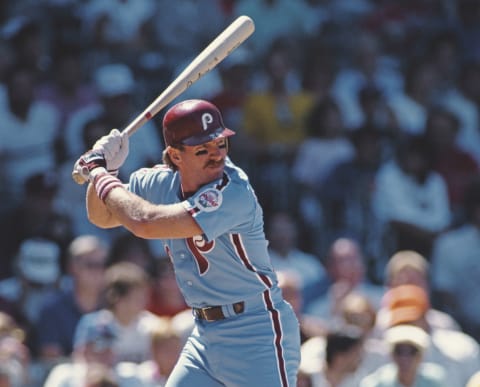
20. team. 6. . . . Mike Schmidt
The greatest Phillie to wear number 20 happens to be the best player in franchise history and the top third baseman in baseball history.
It didn’t start out that way for Mike Schmidt, who struggled to a .206 average in 40 at-bats in 1972 and .196 with 136 strikeouts in 367 at-bats as a rookie. However, Schmidt took off in 1974, hitting 36 home runs to lead the league for the first of three consecutive seasons.
The best power hitter of his generation, Schmidt would hit 30 or more home runs 13 times, surpassing 40 twice and lead the league in long balls eight times.
During the 1980 World Series Championship season, Schmidt belted 48 home runs and knocked in 121 runs, both tops in the league. To top it off, he also took home World Series MVP honors.
In the strike-shortened 1981 season, Schmidt hit .316, leading the league in home runs with 31 and RBI with 91. Not surprisingly, those numbers were good enough to win MVP honors both years.
Schmidt would go on to win another MVP in the twilight of his career in 1986 at the age of 36.
Not only was Schmidt the top offensive third basemen in history, he was one of the best in the field. His ten Gold Glove Awards at third base ranks second only to Brooks Robinson. Schmidt retired abruptly in May 1989 with 548 home runs (then seventh in MLB history), 1595 RBI and 2234 hits.
Schmidt was inducted into the baseball Hall of Fame in 1995 with 96.52 percent of the votes, which at that time was fourth highest in history. He’s one of only six players in franchise history to have his number retired as the all-time home run and games played leader.
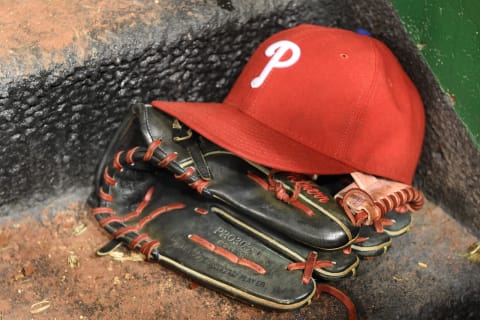
. . Bake McBride. 21. team. 6.
While widely recognized as a Cardinal, Bake “Shake ‘n Bake” McBride was an important cog in the Phillies 1980 World Championship run.
St. Louis selected McBride in the 37th round of the 1970 MLB Draft out of Westminster College, and saw him in the major leagues just three years later. After playing 40 games for the Cardinals in 1973, he returned as an everyday outfielder in 1974.
In his first full season McBride hit .309 with 173 hits in 150 games for St. Louis, winning the Rookie of the Year and finishing 21st in the MVP vote. Ironically, he beat out future teammate Greg Gross for the Rookie of the Year, receiving eight more first place votes despite some of his numbers being inferior to Gross in Houston.
In June 1977 McBride and Steve Waterbury would be traded to the Phillies for Rick Bosetti, Dane Iorg, and Tom Underwood. Philadelphia already had Greg Luzinski and Gary Maddox in the outfield, and the powerhouse trio would help lead Philadelphia to a 101 win season under Danny Ozark.
Following the trade that season McBride hit .339 with 11 home runs and 20 doubles.
Philadelphia nearly traded McBride prior to the 1980 season, but owner Ruly Carpenter nixed the deal with Texas.
McBride turned around with one of the best seasons of his career, hitting .309 with a career-best 33 doubles, and finished 10th in the MVP vote. Teammate Mike Schmidt was the unanimous winner, with Steve Carlton finishing fifth while winning his third of four Cy Youngs.
After a poor showing against Houston in the NLCS hitting .238, McBride turned in on against Kansas City hitting .304 in the World Series.
Philadelphia would trade McBride, whose career would be strained by eye and knee injuries. He played his final game in 1983, and finished his career as a .299 hitter.
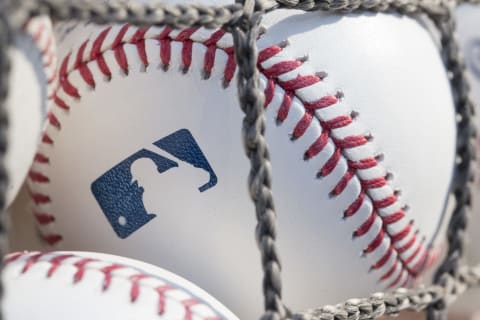
team. 6. . . . Tony Gonzalez. 22
This number hasn’t gotten much love in Phillies history with the likes of Casper Wells, Arthur Rhodes, and Jason Michaels donning it. It’s now worn by Gabe Kapler, who could one day find himself on this list as the best to wear 22.
Born in Central Cunagua, Cuba, Tony Gonzalez made his major league debut with the Reds in 1960. Thirty-nine games into his career Cincinnati traded him to Philadelphia with Lee Walls for Frederick Hopke, Harry Anderson and Wally Post.
He never made an All-Star game, but given he played in a league with Willie Mays, Roberto Clemente, and Hank Aaron, it’s no surprise or knock.
Gonzalez finished his first of 12 seasons season hitting .274 and earned the nickname “Little Dynamite.” Eye and back injuries limited his career and manager Gene Mauch constantly platooned him in center field. The eye injuries caused by hit by pitches became such a problem Gonzalez became the first player in baseball history to wear a pre-molded ear flap on his helmet.
He never made an All-Star game, but given he played in a league with Willie Mays, Roberto Clemente, and Hank Aaron, it’s no surprise or knock.
Gonzalez has a consistent hitter throughout his career in Philadelphia, ending his nine-year stretch with the team in 1968 with a career .295 batting average. Three times he hit at least .300, including a .339 season in 1967, yet he finished 26th in the MVP voting. His .339 batting average placed him second in the batting title race behind Clemente.
Philadelphia lost Gonzalez after the 1968 season when he was selected in the expansion draft by the San Diego Padres 37th overall. Montreal, Kansas City, Seattle, and San Diego added teams that year, and unfortunately, Gonzalez was one of 120 players selected.
San Diego would flip Gonzalez back to the National League East in a deal with Atlanta and finish out his major league career with the Angels before playing in Japan.
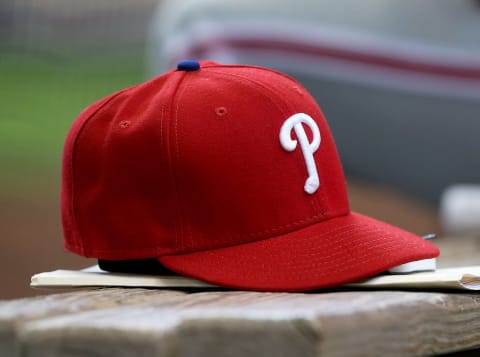
6. . . . Greg Gross. 23. team
Greg Gross wore number 23 during the Phillies 1980 World Championship season following a trade the season prior with Chicago.
The utility-man was drafted by Houston in the fourth round of the 1970 MLB Draft out of Redland High School, just south of Harrisburg. In 1974 he finished second in the National League Rookie of the Year vote behind future teammate Bake McBride despite having more hits than him.
In 1982 he led baseball with 19 pinch-hits and walked twice as many times as he struck out.
After three years with Houston as a consistent hitter Gross found himself in Chicago after a trade for Julio Gonzalez in 1976.
He’d be traded once again in 1979 with Dave Rader and Manny Trillo to the Phillies for Henry Mack, Derek Botelho, Barry Foote, Jerry Martin and Ted Sizemore.
To say the Phillies won that trade would be an understatement. Trillo would have a fantastic career in Philadelphia, and Gross would be an important bat and spend the next decade with the Phillies.
Gross hit .333 in his first year with Philadelphia, and became a key platoon option for Dallas Green.
During the 1980 NLCS Gross came up clutch off the bench going 3-4 with an RBI and two runs scored. He faltered during the World Series going 0-2 and grounded into a double play.
In 1982 he led baseball with 19 pinch-hits and walked twice as many times as he struck out.
Over Gross’s 10 seasons with the Phillies he hit .279 and walked 239 times while striking out just 87 times. He spent 12 seasons as a coach in the Phillies organization, most recently as their hitting coach from 2010-2012.
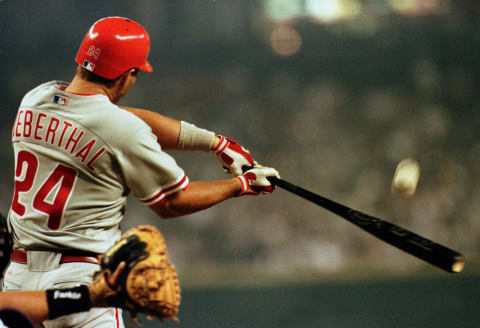
team. 6. . . . Mike Lieberthal. 24
Mike Lieberthal goes down among the best catchers in franchise history with only Red Dooin playing more games at the position in franchise history. Lieberthal finished his 13-year career in Philadelphia with 150 home runs, 609 runs batted in, a .275 batting average and .788 OPS (102 OPS+).
Lieberthal’s peak came at the turn of the century when he earned back-to-back All-Star appearances in 1999 and 2000. In 1999 he earned his only career Gold Glove behind the plate.
From 1999 to 2003, Lieberthal had an .830 OPS with 76 home runs and 311 runs batted in.
Lieberthal played just 34 games in 2001 after tearing his ACL, MCL, and cartilage in his knee while diving back to first. He returned in 2002 with 15 home runs, 52 runs batted in, and a .792 OPS in 130 games. He won the NL Comeback Player of the Year award from the Sporting News in 2002.
Liberthal kept his OPS above .750 from 2004 to 2006, posting a .784 OPS in his final season as a Phillie. He only played 67 games while Chris Coste played 65, Sal Fasano played 50, and Carlos Ruiz played 27. After the season, he signed with the Dodgers, retiring after one season with Los Angeles.
Among Phillies catchers, Liberthal ranks first in home runs and hits, second in runs scored and runs batted in, and fourth in wins above replacement. The Philies didn’t have a winning season with Liberthal and never made the playoffs with him as his last season as a Phillie was in 2006.
In 2012 the club inducted Lieberthal onto the Wall of Fame, making him the first player from his era to receive the honor.

. . Jim Thome. 25. team. 6.
Even though Jim Thome’s career in Philadelphia was short-lived, he is still remembered fondly in the team’s lore. After spending 11 years with the Indians, he signed with the Phillies before the 2003 season, one of the biggest free agent signings in Philadelphia sports history.
Thome led the league with 47 home runs and drove in 131 runs in his first season here, finishing fourth in NL MVP voting that year. He was named an All-Star in 2004, hitting 42 home runs, driving in 105 runs, and posting a .274/.396/.581 slash line. He also mashed his 400th career home run in Citizen’s Bank Park.
Thome missed most of the 2005 season due to injury, playing just 59 games. His replacement, Ryan Howard, took advantage of the situation, hitting 22 home runs and driving in 63 runs in 88 games. He won the NL Rookie of the Year with 68% of the vote, cementing himself into the future of the team.
Thome waived his no-trade clause after the season to be sent to the White Sox, partly to clear the way for Howard but also to be closer to his father. Thome’s mother had just passed and he was worried about his father being alone.
Being traded gave the starting first base position to Howard, who followed up his rookie season by winning NL MVP with league-leading 58 home runs, 149 runs batted in, and 383 total bases.
Thome later returned in 2012, hitting his 609th career home run with the Phillies, tying him for seventh on the all-time home runs list. He finished his career with 612 home runs, 1699 runs batted in, and 2328 hits. He was inducted into the Phillies Wall of Fame in 2016 and the Baseball Hall of Fame in 2018.
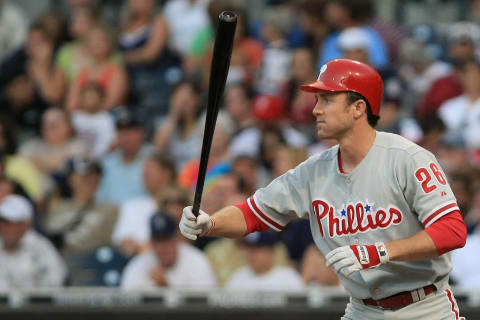
. . Chase Utley. 26. team. 6.
Chase Utley was the embodiment of what it meant to be a Philadelphia Phillie and a baseball player. He was a California kid, born in 1978 in Pasadena, California. By the time he was traded back out west in 2015, most people would say he was a Philly guy, through and through.
Utley’s incredible run in a Phillies uniform from 2003-2015 was a heck of a ride. Six All-Star appearances, four consecutive Silver Slugger Awards from 2006-2009, and a championship in 2008.
In that magical 2008 season, he hit .292 with 33 home runs and 104 RBI. In the first inning of game one of the World Series, Utley hit a two-run homer that all but cemented his legacy as a Philadelphia sports legend.
He also uttered the words that most fans will remember from the celebration at Citizen’s Bank Park: “World F***ing Champions.”
He is a career .275 hitter in 16 seasons with the Phillies and Dodgers with 233 home runs and 916 RBI in a Phillies uniform. He is also the club’s all-time leader in stolen base percentage at 88.36% (129 for 146) and owns a career fielding percentage of .982, though he was robbed of a Gold Glove several times.
From Utley’s silky smooth swing, to his quirky, but precise, fielding, he became a fan favorite and a true leader of the clubhouse. Most fans would probably agree that, on those mid 2000’s teams that we all fell in love with, he was almost everyone’s favorite player. He may be ending his career with the Dodgers, but he is a Phillie for life.
As Harry Kalas famously said, “Chase Utley, you are the man.”
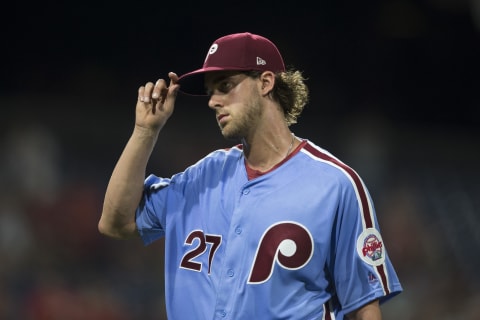
Aaron Nola. 27. team. 6. . .
Aaron Nola’s career in Philadelphia is still quite young, but he has already proven to be a dominant pitcher. He was the team’s 2014 first-round pick and quickly rose to the majors, making his debut the next year. Nola has surpassed expectations from when he was drafted and established himself as an ace-caliber pitcher.
Nola’s first full season in Philadelphia was rocky as he dealt with injury concerns the second half of 2016. He strained his UCL and there was concern he would have to get Tommy John surgery, keeping him out until this year. The team opted for a rest/rehab approach, along with some platelet-rich plasma injections.
This worked out well as Nola has not dealt with any elbow issues since. He missed a month last year due to a back injury, but he hasn’t dealt with any injuries since.
In the last two years combined, Nola has a 2.83 ERA, 1.089 WHIP, 9.4 strikeouts per nine innings, 2.5 walks per nine, and 337 innings pitched in 53 starts. He has been especially dominant this season with a 2.13 ERA, 2.66 fielding-independent pitching, a strikeout per inning, and just eight home runs allowed in 26 starts.
Since the start of the 2017 season, Nola ranks seventh among all pitchers in wins above replacement, behind only Chris Sale, Max Scherzer, Corey Kluber, Jacob deGrom, Luis Severino, and Trevor Bauer. He ranks ahead of Justin Verlander, Carlos Carrasco, and Zack Greinke. All these pitchers are Cy Young-caliber, and Nola may just win it this year.
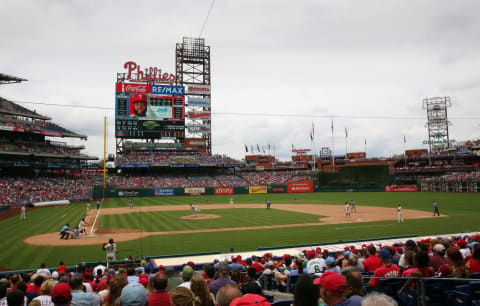
28. team. 6. . . . Curt Simmons
A more modern-day answer to “who is the greatest Phillie to wear 28” would be Jayson Werth. There’s certainly an argument despite him only playing four seasons, but hitting .95 home runs and winning a World Series nix the the lack of longevity.
However, it’s hard to bypass recognizing one of the great Phillies pitchers of the 1950’s who set franchise records along the way.
Philadelphia found Simmons by coincidence after arranging for the BIG LEAGUE TEAM to face high school All-Stars from the Lehigh Valley area in 1947. A student at Whitehall High School, Simmons struck out 11 Phillies batters, and was signed to a $65,000 signing bonus, equivalent to $761,878.60 today.
Simmons threw a complete game in his first start that season, and in his first 101 games, mixed between the rotation and bullpen, he had a 4.13 ERA. He won 17 of 25 games in the 1950 pennant season, but he was called to serve in the Korean War, missing the Whiz Kid’s postseason appearance and all of the 1951 campaign.
After returning from Korea, Simmons won 86 games over seven seasons with five double-digit win years. In 1952 he made his first All-Star game and finished the year 14-8 with a 2.82 ERA, and led baseball with six shutouts.
Simmons is now fifth on the Phillies all-time win list with 115, 10th in pitchers WAR, fifth in innings pitched, eighth in strikeouts, and sixth in both starts and shutouts.
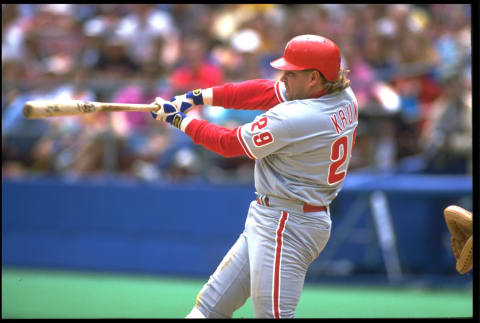
John Kruk. 29. team. 6. . .
The 1993 Phillies were a rambunctious group of misfits, and no one personified that team better than John Kruk.
A first baseman and outfielder from West Virginia, Kruk began his career with the San Diego Padres hitting for average with a little pop and a decent glove. He finished seventh in Rookie of the Year voting in 1986 after hitting .309 in 122 games. Playing with Tony Gwynn in San Diego Kruk grew close with the late Hall of Famer and periodically recounts stories on Phillies broadcasts.
In June 1989 Kruk and Randy Ready were traded to the Phillies for Chris James, a young outfielder coming off a 19 home run season. Kruk made an instant impact hitting .331 in 81 games that year following the trade, but the club finished fourth in the division.
Kruk would earn his first of three consecutive All-Star in 1991, and also begin three consecutive years where he received top-17 MVP votes.
From ’91-’93 he hit .311 with a .407 on-base percentage with 90 doubles, 45 home runs, and walked only five times fewer than he struck out.
During the ’93 season Kruk was third on the team in WAR behind Darren Daulton and Lenny Dykstra with a .316 batting average. During the team’s playoff run that ended in dramatic fashion during the World Series, Kruk hit .298 with 14 hits in 12 games.
In the six games against Toronto Kruk hit an impressive .348 with a .500 on-base percentage.
Kruk would leave Philadelphia for the White Sox in free agency following the ’94 season, only to retire during his 1,200th career game.
The Phillies inducted Kruk onto the Wall of Fame in 2011, following teammate Darren Daulton as the second member of the ’93 team to receive the honor.
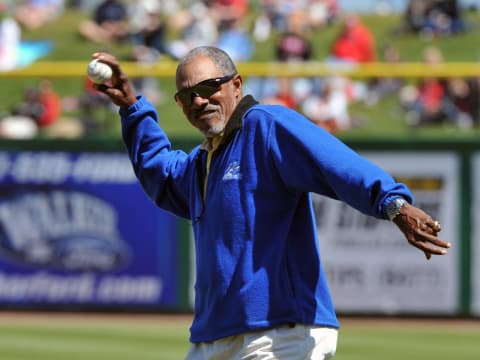
. Dave Cash. 30. team. 6. .
Dave Cash spent only 3 of his 12 seasons in Philadelphia, but they were in the prime of his career where he put up some incredible numbers.
Drafted in the fifth round by Pittsburgh, Cash made his major league debut in 1969 and played five seasons in the Steel City hitting .285 in 420 games. He became the Pirates everyday second baseman, but a crop of young players eventually pushed him out.
In 1976
he struck out only 13 times,
a remarkable feat considering players today will do that in a week.
Pittsburgh traded Cash to Philadelphia for Ken Brett, a 24-year-old pitcher who would pitch for 10 teams over 12 seasons, on October 18, 1973. Philadelphia had finished 20 games under .500
Cash arrived to a team that hit just .249 the year before and provided a spark as one of the team’s most consistent hitters.
In his three years with Philadelphia, Cash led baseball in at-bats with 687, 699, and 666. During his tenure, he was a top-16 MVP candidate and an All-Star every year, and he got on base at a ridiculous pace. In 1975 he led baseball with 213 hits, and two years later he did the same with 12 triples.
In 1976 he struck out only 13 times, a remarkable feat considering players today will do that in a week.
Cash left the team in free agency after the 1976 season, and was unfortunately not a part of the team’s success in 1980, his final year in the league.
The outfielder holds the franchise live-ball era record for at-bats per strikeout at 25.7, and his aforementioned single-season records are among the top-five in team history.

Gary Maddox. 31. team. 6. . .
You don’t earn the nickname “Secretary of Defense” for no reason. Garry Maddox was one of the best center fielders of his era, and one of the best outfielders in franchise history.
San Francisco drafted the California native in the second round back in 1968, but joined the Army and fought in Vietnam. At the age of 22 he replaced Willie Mays in center field and was playing alongside Barry Bonds for San Francisco. In his sophomore season Maddox hit .319 and received MVP votes, cementing himself as the everyday center fielder.
In May of 1975 the Phillies traded first baseman Willie Montanez to San Francisco for the young center fielder Maddox, unknowingly adding one of the great players in franchise history.
The following season Maddox finished fifth in the MVP race after hitting .330, and earned his second Gold Glove, and the first of seven consecutive. In 1979 he, unknowingly, finished second in Phillies history with a 2.9 dWAR behind Larry Bowa, a record current held by Chase Utley.
Maddox played the final 12 seasons of his 15-year career in Philadelphia, and was a leading force towards their 1980 World Series championship with his defense and consistent hitting. In the NCLS Maddox made the final play to win the pennant and was carried off by his team.
He won the Roberto Clemente award in 1986, and Philadelphia inducted him onto the Wall of Fame in 2001.
Maddox is sixth among Phillies live-ball players with a career dWAR of 11.1, the best for an outfielder in franchise history.
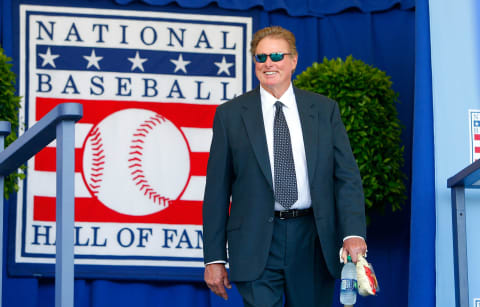
. . Steve Carlton. 32. team. 6.
Steve Carlton is undisputedly the greatest pitcher in Phillies franchise history, and one of six players with their number retired. “Lefty” is the Phillies all-time wins leader with 241 and strikeouts with 3031, more than 1,000 more than Robin Roberts and Cole Hamels.
Carlton is also the franchise leader with 499 starts, and sits second behind Roberts in WAR, games played, innings, and shutouts. He won four Cy Youngs, which was once a record but now he sits tied for third-most behind Roger Clemons and Randy Johnson.
Lefty made 10 All-Star games, won an ERA title and a Triple Crown, and capped off his career with a Gold Glove and enshrinement into Cooperstown.
Needless to say, Lefty was pretty darn good.
Philadelphia acquired Carlton just as he reached the prime of his career with St. Louis. Already seven seasons into his Hall of Fame career, Lefty had a 3.10 ERA and 66 complete games in 172 starts.
St. Louis traded Carlton in February of 1972 for 25-year-old Rick Wise, who had already thrown a no-hitter and was coming off his first All-Star game. Needless to say, the Phillies won that trade.
Carlton won his first Cy Young in his inaugural season with Philadelphia, winning the Triple Crown with 27 wins, a 1.97 ERA, and 310 strikeouts. He won half the team’s wins that year in a dismal 59-97 season.
In 1980 he went 24-9 in the regular season, and had a 2.40 ERA in 15 World Series innings.
Carlton won no fewer than 13 games in his first 13 seasons in Philadelphia.
Philadelphia released Carlton during the 1986 season after he posted a 6.18 ERA in 16 starts at the age of 41. Minnesota, Cleveland, San Francisco, and Chicago each gave Carlton shots in his final two years, but Lefty’s career was complete after 1987.
Carlton is 11th on the all-time win list with 329, and fourth in strikeouts with 4,136.
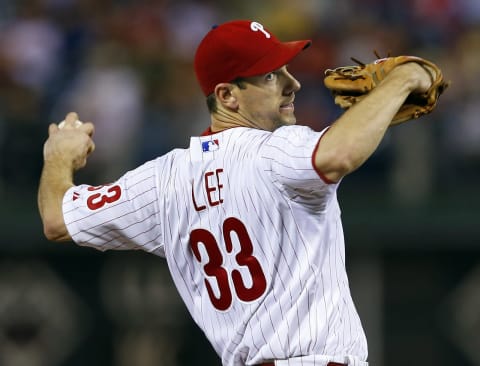
. . . Cliff Lee. 33. team. 6
Cliff Lee spent two stints with the Phillies, his first being a rental for half of the season via a trade from Cleveland in 2009. The second was when he signed as a free agent in 2011 and became part of one of the best rotations in the history of baseball with Roy Halladay, Cole Hamels, Roy Oswalt, and Joe Blanton.
It is, honestly, hard to decide which stint was more exciting. We got to see Cliff Lee in a World Series against the Evil Empire in 2009. He was the only pitcher on the staff that was effective, winning two games in a 4-2 World Series defeat.
The amount of swagger this guy had was ridiculous.
Waking up to the news that Cliff Lee was returning to Philly in 2011 was like Christmas morning. Roy Halladay was incredible and set the example of what a pitcher should be, but there was something about Lee that was so enticing. He had a gravity about him.
That 2011 season was absolute magic. Obviously, it didn’t end well as they were eliminated in the Divisional Round of the postseason. But the ride was something that will never be forgotten by this fanbase.
As a Phillie, Lee threw 12 complete games and had a K/BB rate of 6.56 in 118 games in the red pinstripes. Eight of those twelve games were shutouts. In his five years in Philadelphia, he had a WHIP of 1.09. Filthy.
Lee’s six shutouts during the 2011 season are the third-most in franchise history during the live-ball era, and his 7.393 strikeouts per walk is the best in franchise history.
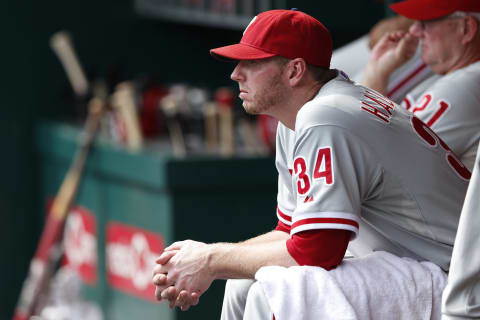
. . Roy Halladay. 34. team. 6.
Roy Halladay was a major trade acquisition in for the Phillies in 2010, and a top-five trade in Philadelphia sports history.
After failing to defend their title with a 2009 World Series loss, the Phillies bolstered their rotation with the signing of the former Cy Young winner. Doc lived up to the hype. In his first year in the red pinstripes, pitching a perfect game and a postseason no-hitter.
He claimed the second Cy Young of his career and finished runner up the following season. Over his first two years he won 40 games while posting a 2.40 ERA while tossing 17 complete games, five of which were shutouts.
Being an All Star in each of his first two Philly years he and a super rotation including Cole Hamels, Cliff Lee and Roy Oswalt led the Phillies to two straight division titles. Halladay always delivered in Doctober.
In his first career postseason start Halladay tossed a no-hitter against the Cincinnati Reds and over five postseason starts posted a 2.37 ERA.
However the last two years of Halladay weren’t the same as the first. In only 38 starts an often injured Halladay watched his ERA climb to 5.15 with a WHIP just below 1.30, compared to the 1.04 in the two years prior.
Halladay faded out at the same time the Phillies dynasty did. While Halladay will likely being remembered for his 12 years as a Toronto Blue Jay, his four years in Philadelphia were nothing short of remarkable.
The future Hall of Famer died tragically in a plane crash in November of 2017, and had his number retired by Toronto to the following season.
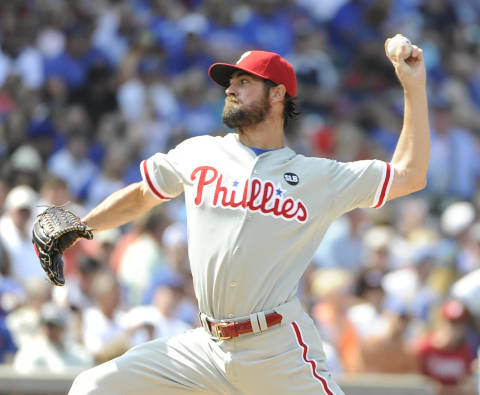
6. . . . Cole Hamels. 35. team
Cole Hamels pitched 10 seasons with the Phillies, helping lead them to a World Series in 2008. That year, he was the ace for what was an otherwise poor rotation, going 14-10 with a 3.09 ERA, 1.08 WHIP, and 3.70 strikeout-to-walk ratio in 33 starts. He tossed two complete game shutouts, one of three times he did that in a season.
Hamels was the NLCS and World Series MVP in 2008, allowing just seven runs in five starts in the playoffs, starting the NLCS and World Series-clinching games.
Hamels had a down year in 2009 but was strong the rest of his time in Philadelphia. In 2011 he finished fifth in Cy Young voting after posting a 2.79 ERA and 0.986 WHIP in 32 appearances. He then finished eighth the next year with a 3.05 ERA and 1.124 WHIP in 31 starts.
During the 2014 season Hamels and three relievers combined to throw a no-hitter against Atlanta, and in his last start before being traded to the Rangers in 2015, Hamels threw a no-hitter against the Cubs at Wrigley Field.
In his Phillies career, Hamels had a 114-90 record, 3.30 ERA, 3.47 fielding-independent pitching, 1.145 WHIP, and 3.75 strikeout-to-walk ratio in 295 games. He threw 14 complete games, including seven shutouts. He was a model of consistency, making more than 30 starts every year from 2008 to 2014.
Hamels was a three-time All-Star with the Phillies, being named to the team in 2007, 2011, and 2012. He was one of the homegrown talents who propelled the team to its first championship in 28 years. The hope is the talent acquired by trading him will help them win another title.

. . . Robin Roberts. 36. team. 6
If it were not for Steve Carlton, Robin Roberts would easily be the best pitcher in franchise history. His 71.8 career wins above replacement is the highest among all pitchers in franchise history and second only to Mike Schmidt among all players. He is one of only five players to have their number retired by the team.
Roberts pitched 14 seasons for the Phillies from 1948 to 1961. He was a seven-time All-Star from 1950 to 1956, nearly winning the MVP award in 1952. He led the league in wins, starts, complete games, innings pitched, strikeouts, fielding-independent pitching, walks per nine innings, and strikeout-to-walk ratio, in multiple seasons.
Roberts led the 1950 “Whiz Kids” team to the World Series before being swept by the Yankees. Roberts pitched a 10-inning complete game in Game Two but allowed the game-winning home run in the top of the 10th. That year, he had a 20-11 record, started a league-leading 39 games, and tossed five shutouts.
Roberts nearly won the MVP award (before the Cy Young was created) in 1952, finishing second in voting. Hank Sauer edged him out by four percent of the vote. Roberts led the league in wins (28), starts (37), complete games (30), innings pitched (330), walks per nine innings (1.2), and strikeout-to-walk ratio (3.29).
Among all pitchers in franchise history, Roberts ranks first in innings pitched and complete games, second in wins, starts and strikeouts, and third in shutouts. When starting pitchers regularly pitched 300 innings and made more than 40 starts, Roberts was among the best at it.
He was inducted into the Baseball Hall of Fame in 1976 and was the inaugural inductee onto the Phillies Wall of Fame in 1978.
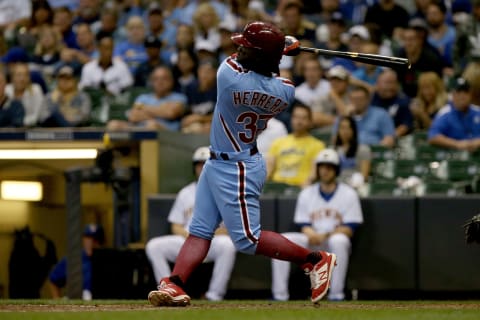
6. . . . Odubel Herrera. 37. team
Odubel Herrera is another player whose career is still young, but he has established himself as a long-term piece of the Phillies. His contract extension through the 2021 season only furthers that point.
Herrera was the team’s Rule 5 pick in 2014 from the Texas Rangers. He was a second baseman with them but was converted to center field. He has taken to the position well and has been the starter ever since. During his rookie year, he posted the best OPS+ (111) of his career. Over the last four years, he has 57 home runs, 210 RBI, a .283/.339/.433 line, and 106 OPS+.
Herrera was an All-Star in 2016 and a Gold Glove finalist that year and had a .286/.361/.420 line with 15 home runs, 49 runs batted in, and 25 stolen bases. Herrera was worth 4.2 wins above replacement in 2016, leading to the front office giving Herrera his extension.
Since the start of his career, Herrera ranks 10th in hits, 12th in wins above replacement, 18th in batting average, and 26th in runs scored among all outfielders. While he can make frustrating mistakes, his ability at the plate can’t be denied. When he is on at the plate, there are few players in the game who hit better than him.
The fact that he was a Rule 5 pick and is producing at this level makes it all the better.
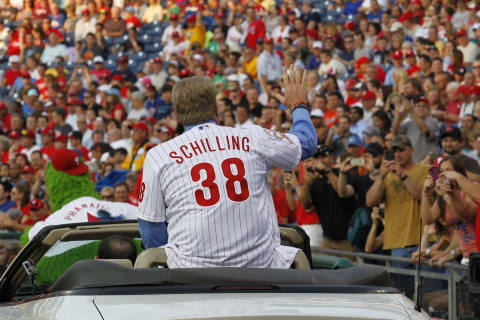
6. . . . Curt Schilling. 38. team
Say what you will about what he has done after his playing career, but Curt Schilling was a force to be reckoned with on the mound. He was an effective pitcher for two decades with five teams, including the Phillies.
Schilling resurrected his career as a starter in 1992, starting 26 games and appearing in 42 games altogether. He led the league in WHIP and hits per nine innings that year while being worth 5.9 wins above replacement. While Schilling did not have a great regular season in 1993, he was NLCS MVP that year, allowing three earned runs in two starts.
Schilling earned his first All-Star appearance in 1997, finishing fourth in Cy Young voting that year. He racked up a league-leading 319 strikeouts in 254.1 innings. It set the record for most strikeouts by a Phillie in single-season. Schilling had a 17-11 record, 2.97 ERA, 1.046 WHIP, and 5.50 strikeout-to-walk ratio in 35 starts.
In 1998, Schilling led the league in complete games (15), starts (35), innings (268.2), and strikeouts (300). Schilling didn’t lead the league in any category the next year, but still was an All-Star.
Altogether, Schilling finished his Phillies career with a 3.35 ERA, 14 shutouts, 1.120 WHIP, and 3.74 strikeout-to-walk ratio in 242 appearances. Schilling was traded to the Diamondbacks in 2000, where he went on be World Series MVP in 2001. He won two more World Series with the Red Sox in 2004 and 2007, his final year in the majors.
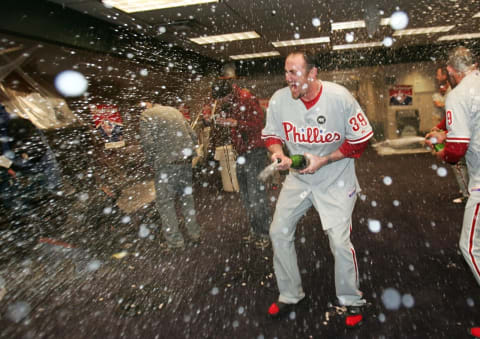
39. team. 6. . . . Brett Myers
While Myers didn’t post exceptional numbers in his career, he is still remembered as one of the contributors to the 2008 World Series champions. His signature moment of that playoff run didn’t come on the mound, but when he drew a walk from C.C. Sabathia in Game Two of the NLDS before Shane Victorino’s grand slam.
The peak of Myers’ career came between 2005 and 2006. In 2005, he made 34 starts with a 3.72 ERA, 13-8 record, 1.212 WHIP, and 3.06 strikeout-to-walk ratio. He was worth 2.9 wins above replacement, the first time he was worth more than one win above replacement. His ERA slightly rose the next year to 3.91, but he set a career high for wins above replacement at the time with 4.4.
In eight years with the Phillies, Myers had a 4.40 ERA, 73-63 record, 1.357 WHIP, and 2.39 strikeout-to-walk ratio. He was both a starter and a reliever, serving as the team’s closer in 2007.
He piled up 21 saves that year and was on the mound to clinch the team’s first division title since 1993.
Myers then returned to the rotation in 2008, starting 30 games with a 4.55 ERA, 1.379 WHIP, and 10-13 record. He still managed to be the team’s No. 2 pitcher in the playoffs and went 2-1 despite allowing 10 earned runs in 19 innings.
After an early-season injury in 2009, Myers once again returned to the bullpen as the team had a much stronger rotation with the additions of Pedro Martinez and Cliff Lee.
team. 6. . . . Steve Bedrosian. 40
When you think of Phillies Cy Young winners, Steve Bedrosian is almost certainly not the first one you think of. The reliever won it in 1987 when he led the league with 40 saves, posting a 2.86 ERA in the process. He was just the sixth reliever to win the award and only one of nine to ever do so. He was also an All-Star and finished 16th in MVP voting that year.
Bedrosian began his career in Atlanta as a third round pick in 1978 and made his debut in 1981 at the age of 23. The Braves worked Bedrosian primarily as a reliever, but in 1985 he made 37 starts and finished the year 7-15 with a 3.83 ERA.
In December of ’85, Bedrosian was traded by the Braves with Milt Thompson to the Phillies for Pete Smith and Ozzie Virgil.
Bedrosian pitched in four seasons for the Phillies, racking up 103 saves and finishing 188 games. Altogether, he had a 3.29 ERA, 1.253 WHIP, 241 strikeouts, and 106 walks in 287.1 innings. He ranks third in saves and eighth in games finished in franchise history.
Halfway through the 1989 season, Bedrosian was traded to the Giants with Rick Parker for Dennis Cook, Charlie Hayes and Terry Mulholland. San Francisco went to the World Series with Bedrosian, but lost to the Athletics.
Bedrosian got his lone World Series title in 1991 with the Twins before returning to Atlanta for three seasons
Today, Bedrosian’s son Cam is a reliever for the Angels leading the way with 62 appearances this season.
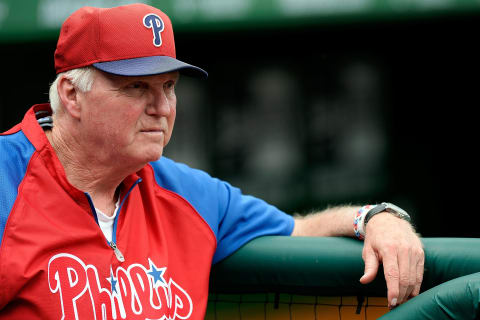
. . . Charlie Manuel. 41. team. 6
Chris Short won 132 games as a pitcher in the 60’s for Philadelphia wearing number 41, but his contributions don’t come anywhere close to matching those of the organization’s winningest manager Charlie Manuel.
An unpopular hire at the time, Manuel brought his southern accent and stutters to Philadelphia with a big question mark over his head. The former Indians hitting coach and manager had won 90 games twice with Cleveland but didn’t feel like the right guy to lead a team trending towards playoff contention.
Manuel won a franchise record 780 games in Philadelphia with back-to-back pennants and five division titles.
Those worries were put to bed quickly as Manuel and the Phillies came out of the gate with 88 wins in 2005. Three years into his tenure Philadelphia made the playoffs for the first time since 1993. That began a five-year run of division titles capped off with a World Series victory in 2008, the team’s first in 28 years.
The Phillies should have won two or three championships during that era, and it’s plausible that the best team of that era wasn’t the one that won it all. There aren’t any glaring managerial mistakes made by Manuel in those playoff series, most of the losses simply came down to execution. If Cole Hamels pitched better in 2009, if they scored one run against Matt Carpenter, if Ryan Howard didn’t tear his achillies.
Manuel won a franchise record 780 games in Philadelphia with back-to-back pennants and five division titles. The franchise inducted him onto the Wall of Fame in 2014, joining the likes of Connie Mack and Dallas Green.
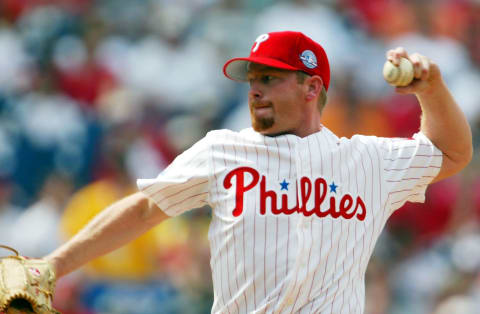
. . Randy Wolf. 43. team. 6.
A homegrown lefty drafted in the second round of the 1997 MLB Draft, Randy Wolf was one of the Phillies best pitchers in the early 2000s, supported by “The Wolf Pack” in the top bleachers at Veteran’s Stadium.
Los Angeles originally selected Wolf, a California native, in the 25th round in 1996 out of El Camino Real High School in Woodland Hills. Wolf turned down the offer to play for Pepperdine University in Malibu, the same school that would produce Dan Haren and Eric Thames.
Wolf made a quick jump to the majors, appearing in his first game as a Phillie in June 1999. He stuck as a starter and would have four consecutive seasons with double-digit wins. including a 16-win season in 2003 when he made his lone All-Star game.
On April 12, 2004, Wolf became the first pitcher to start in Citizens Bank Park, ushering in a new era of Phillies baseball.
In 2005 Wolf underwent Tommy John surgery, limiting him to just 13 games that season and 12 the next, in what would be his final season as a Phillie.
Wolf went on to pitch for the Dodgers, Brewers, Padres, Tigers, Marlins, and Orioles over a 16-year career that only recently ended in 2015 with a two-year hiatus following a second Tommy John surgery.
As a member of the Brewers Wolf threw the slowest recorded pitch in Major League Baseball history by a starting pitcher after tossing up a 49 MPH curveball in 2012.
Wolf retired after signing a ceremonial one-day contract with the Phillies in 2015, and is 10th in franchise history with 971 strikeouts.
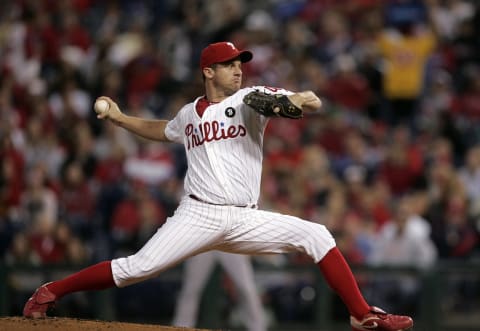
. . . Roy Oswalt. 44. team. 6
While his time in Philadelphia was short-lived, Roy Oswalt was part of one of the greatest rotations in baseball history.
Oswalt began his major league career as a 23rd round pick out of Holmes Community College in Ridgeland, Mississippi in 1996.
In five of his first six seasons, Oswalt would be a top-five Cy Young candidate and runner-up for Rookie of the Year behind Albert Pujols. He’d pitch consecutive 20-win campaigns, and led the league in wins and starts with 35 in 2004.
In five of his first six seasons, Oswalt would be a top-five Cy Young candidate and runner-up for Rookie of the Year behind Albert Pujols.
With the Astros in the middle of a lengthy rebuild, Oswalt was one of the many trade casualties the organization had to make. At the trade deadline in 2010 Philadelphia acquired Oswalt from Houston for starter J.A. Happ and prospects Anthony Gose and Jonathan Singleton.
Happ had just finished second in the Rookie of the Year race behind Chris Coghlan, and Singleton was one of the best power-hitting prospects in baseball.
Oswalt came in and was revitalized in a playoff atmosphere, going 7-1 with a 1.74 ERA in 12 starts. He’d finish sixth in the Cy Young vote after leading baseball with a 1.025 WHIP and finishing the season with a 2.76 ERA.
During the 2010 playoffs Oswalt made three starts and a relief appearances against Cincinnati and San Francisco, including the deciding game six of the NLCS. He pitched eight one-run innings in game two of the series and went six strong giving up one earned run in game six.
One of the great moments of Oswalt’s career came in the 15th inning of a game against his former Houston club when Ryan Howard was ejected for arguing a check swing. With no position players to replace Howard in the field, Phillies starters raced to the clubhouse to get their gloves and spikes. Oswalt was the man chosen to take over in left field where he made a play to get out of the inning.
Of course, the first pitch of the inning was a sinking fly ball right to him.
Oswalt had to leave the team in 2011 after tornadoes went through his hometown in Mississippi, and a back injury hindered him throughout the season. Rumors were that he suffered the injury while working in Mississippi helping the town recover. He was never the same after the injury, and the club did not retain him the following season.
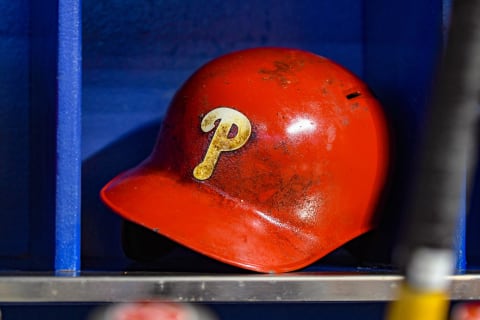
6. . . . Terry Mulholland. 45. team
Terry Mulholland pitched 20 seasons in the Major Leagues, six of them for the Phillies. He was acquired in a trade with the Giants along with Dennis Cook and Charlie Hayes for Steve Bedrosian and Rick Parker in June of 1989.
Mulholland struggled with the Phillies in 1989, going 4-7 with a 5.00 ERA. However, he did better the following season, winning nine with an ERA of 3.34. The highlight of the season was his no-hit effort against the Mets on August 16, 1990.
Perhaps his finest season was in 1992 when he won a career high 16 games, along with 232 innings pitched and a season best 142 strikeouts. Already an integral part of the Phillies starting rotation, Mulholland made his only All-Star team in 1993, finishing with 12 wins and a 3.25 ERA.
Mulholland was traded to the Yankees in February 1994 and after a season in New York and one in San Francisco, returned to the Phillies in 1996. He went 8-7 with a 4.66 ERA in 21 starts with the Phillies before being traded to the Mariners for shortstop Desi Relaford.
Being a lefty with an excellent pick off move and great control, there was always a spot on a Major League roster for Mulholland. For the next 10 seasons, he bounced around the Majors, pitching for eight different teams before retiring with the Diamondbacks in 2006.
Although only about 25 percent of his appearances came in a Phillies uniform, Mulholland had his most success in Philadelphia. He finished his time with the Phillies with 62 wins, nine shutouts and a 3.81 ERA in 169 games, covering 1070 1/3 innings.
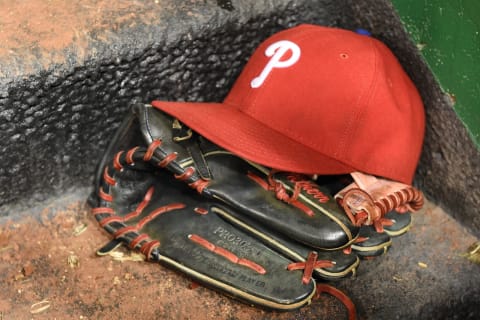
team. 6. . . . Dallas Green. 46
Only two managers have won a World Series in Philadelphia, and Dallas Green was the first after nearly 100 years of baseball.
Green got his start in baseball with the Phillies as a pitcher after being signed as an amateur free agent out of the University of Delaware. He made his major league debut in 1960 making 10 starts and 13 relief appearances, and earning a 4.06 ERA as a rookie.
Bouncing between the rotation and bullpen Green went 20-22 with a 4.14 ERA in 167 games, the majority out of the pen. Both the Washington Senators and the New York Mets purchased Green’s contract from Philadelphia, but he only made a combined 10 appearances for both teams over two seasons.
Green made eight final appearances for Philadelphia in 1967 before retiring and entering the coaching circle. He joined the Phillies front office as an assistant to the great Paul Owens, and would later run the minor league operations.
Owens hired Green to replace Danny Ozark in 1979, and the rest is history. In Green’s first full season the franchise won 91 games and their first championship. Green only remained with the Phillies through the 1981 season before the Cubs hired him to be their general manager. The first manager to win a championship in Phillies history would depart after just 299 games with a 169-130 record.
Green would return to the dugout to manage the Yankees for half a season and Mets for parts of four years. Philadelphia brought Green back as a special assistant to the general manager until his death in 2017.
In 2006 the organization inducted Green onto the Wall of Fame and he remained a beloved face of the organization.
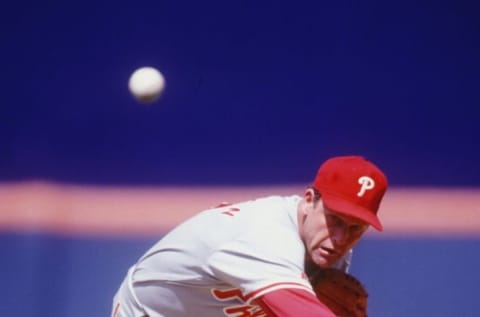
. . Larry Andersen. 47. team. 6.
Larry Andersen became a veteran voice and a dominant reliever for the Phillies through two stints, most notably for the 1993 Phillies.
Andersen started his career as a seventh-round draft pick of the Cleveland Indians in 1971 out of high school. After appearing in 24 games for Cleveland as a reliever he was traded to the Pirates and subsequently to the Mariners within 14 months.
MLB Network named Andersen the 12th-best personality in the history of baseball, and he remains a beloved member of the broadcast team as the home radio color “analyst.”
After six years of bouncing between clubs and the minors Andersen got an opportunity with Seattle and pitched with a 2.66 ERA in 1981. Two years later he was on the move again, this time to Philadelphia, who purchased his contract.
Andersen joined the bullpen for the 1983 World Series run, and over his first 138 games in Philadelphia had a 3.13 ERA and a 1.274 WHIP.
Philly failed to retain Andersen after the 1986 season, and he joined the Astros in free agency. After five years in Houston with a 2.57 ERA, Andersen was infamously traded straight-up for prospect and future Hall of Famer Jeff Bagwell.
Andersen finished the 1990 season in Boston and pitched two years in San Diego before returning to Philadelphia. He pitched in 64 games for the 1993 Phillies at 40-years-old and had a 2.92 ERA.
MLB Network named Andersen the 12th-best personality in the history of baseball, and he remains a beloved member of the broadcast team as the home radio color “analyst.”
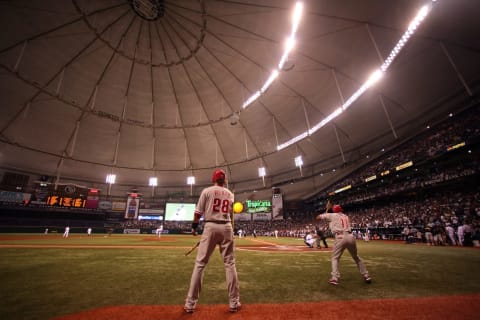
48. team. 6. . . . Dickie Noles
Dickie Noles started off his 11-year career as a Phillie, being drafted in the fourth round of the 1975 draft. He made his major-league debut in 1979, making 14 starts and pitching 90 innings. He had a 3.80 ERA, 1.311 WHIP, 42 strikeouts, and 38 walks.
Noles moved to the bullpen in 1980, making three starts and 45 appearances as a reliever. His served as a long reliever with 21 of his 45 relief appearances lasting more than an inning. He finished 20 games, recording six saves and two holds. He had a 3.87 ERA, 1.500 WHIP, and 1.36 strikeout-to-walk ratio in 81.1 innings.
His career wasn’t illustrious, but his time here on the first World Series team in franchise history makes him the top player to wear No. 48.
During the 1980 playoffs, Noles allowed one run on a home run in 4.2 innings when he relieved starter Larry Christenson after one out in Game Four of the World Series. It was the only run he allowed in the playoffs as he had two shutout outings in the NLCS.
Noles split the 1981 season between the majors and Triple-A, posting a 4.17 ERA in 13 appearances, eight of which were starts. He started Game Four of the NLDS against the Expos, allowing two runs in four innings. The Phillies eventually won the game in ten innings before losing in Game Five.
After the 1981 season, Noles was traded with Dan Larson and Keith Moreland to the Cubs for Mike Krukow and cash. He bounced around the league for the rest of the decade, spending time with the Cubs, Rangers, Indians, Tigers, and Orioles. He returned to Philadelphia in 1990, pitching one more game in the majors with the team that drafted him.
Altogether, Noles had a 4.56 ERA, 36-53 record, 455 strikeouts, 338 walks, and 860.1 innings in 277 career appearances. His career wasn’t illustrious, but his time here on the first World Series team in franchise history makes him the top player to wear No. 48.
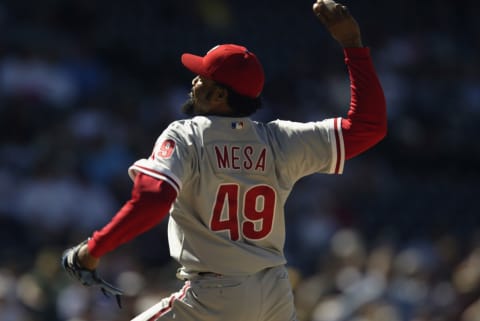
6. . . . Jose Mesa. 49. team
Jose Mesa pitched across three decades during his 19-year career, playing for eight different teams. His best days came as an Indian during the mid-90s. He was an All-Star in 1995 and 1996. In 1995, he led the league with 46 saves in 48 opportunities, finishing 57 games that year. He finished second to Randy Johnson in AL Cy Young voting and fourth in MVP voting behind Mo Vaugh, Albert Belle, and Edgar Martinez.
Mesa eventually made his way to Philadelphia after a rough season in Seattle where he had a 5.36 ERA in 66 games. He made a huge turnaround when he switched to the National League, posting a 2.34 ERA and 2.95 strikeout-to-walk ratio in 71 games. He went 42-for-46 in save opportunities, the fifth-most saves in the NL that year.
Mesa had another strong season in 2002 with a 2.97 ERA and 45 saves, but he also blew nine saves. That was a sign of things to come the next year where his ERA ballooned to 6.52 in 61 outings at age 37. He was worth -1.9 wins above replacement that year, so it’s no surprise the Phillies cut ties with him after the season.
Mesa returned for one final year as a Phillie in 2007. The team hoped to get 2001-2002 Mesa, but instead they got 2003 Mesa. He had a 5.54 ERA in 40 appearances, walking 19 batters and striking out 20. The 41-year-old still made it onto the playoff roster, allowing three runs in 0.1 innings during Game Two of the NLDS.
After the 2007 season, Mesa retired with 1022 career appearances. He racked up 321 saves with 73 holds, posting a career 83.8% save percentage.
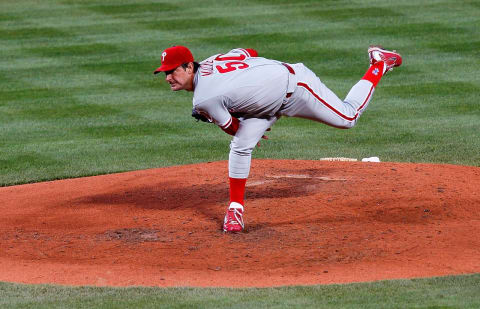
. Jamie Moyer. 50. team. 6. .
Jaime Moyer came to the Phillies as a 43-year-old in 2006, 20 years after his major-league debut in 1986. His average fastball velocity was already under 82 mph by that time in his career, but he still had a few more seasons left in the tank.
Moyer made 33 starts in 2007 with a 14-12 record, 5.01 ERA, 4.93 fielding-independent pitching, and 1.445 WHIP. He was the winning pitcher in the final game of the season that secured the NL East for the Phillies. He had a strong outing in Game Three of the NLDS that year, giving up just one run on five hits and two walks in six innings. He didn’t factor into decision as J.C. Romero allowed the winning run in the bottom of the eighth inning.
Moyer was the oldest player in the majors in 2008, but that didn’t stop him from going 16-7 with a 3.71 ERA in 196.1 innings that year.
Moyer was the oldest player in the majors in 2008, but that didn’t stop him from going 16-7 with a 3.71 ERA in 196.1 innings that year. Moyer was again the winning pitcher when the Phillies won the NL East. His 2.8 wins above replacement and ERA were both second-best to Cole Hamels in the rotation that year.
Moyer also received credit for mentoring Hamels as a young pitcher, helping him turn into the ace of the rotation.
Moyer wasn’t as effective in the playoffs, receiving the loss in the NLDS and NLCS, both of which were the only loss by the Phillies in each series. Moyer allowed three runs in 6.1 innings during Game Three of the World Series. It was the only game the Phillies won in the playoffs with Moyer in the mound during his career.
The 2009 season was when Moyer’s career started to decline. His ERA rose to 4.94 and he was moved to the bullpen when the Phillies signed Pedro Martinez. He didn’t get to appear in the playoffs that year as he suffered three torn muscles in his groin and abdomen right at the end of the season. His season was cut short in 2010 after suffering an elbow strain, but he still put together one of the best starts in his career, becoming the oldest pitcher to throw a shutout.
Moyer’s contract expired after the 2010 season and another elbow injury after the season led to Tommy John surgery. He returned to the majors at 49 years old with the Rockies, but he was released after two months. He bounced around the minors the rest of the year and tried to make a comeback in 2013, but announced his retirement after the year.
Moyer ended his 25-year career in the majors with a 269-209 record, 4.25 ERA, 1.322 WHIP, 2441 strikeouts, and 1155 walks in 696 appearances. He holds the unglamorous record of the most career home runs allowed by a pitcher, 522. Moyer was eligible for election into the Hall of Fame this year, but received just 10 votes, failing to reach the five percent threshold.

. . Carlos Ruiz. 51. team. 6.
Carlos Ruiz, more commonly known as Chooch, is among the greatest catchers to ever play in Philadelphia.
In his 11 years wearing the red pinstripes, he hit .266/.352/.393 with 68 home runs and 401 RBI. Ruiz hit for extra bases in 32.2% of his 934 hits with the Phils, including the postseason. His best offensive season came in 2012, when he hit .325 with 16 home runs and 68 RBI., and earned his lone All-Star appearance that year.
Ruiz also came up clutch in the post-season, driving in the game-winning run in game three of the World Series.
But it was not necessarily the offense that made Chooch a favorite in the clubhouse and fanbase alike. Carlos Ruiz was a wizard behind the plate. He was the catcher of four no-hitters, tying the MLB record set by Jason Varitek.
One perfect game by Roy Halladay in the 2010 regular season against the Marlins, followed by a no-hitter in Halladay’s first postseason appearance against the Reds that year, a combined no-hitter which Cole Hamels started in 2014 against the Braves, and Cole Hamels’ no-hitter at Wrigley Field in 2015.
Ruiz was probably the most highly regarded player from the Phillies core that won five straight division titles and a World Series among the fans.
He told MLB.com in an interview following his trade in 2015 to the Dodgers that “My heart and everything was in Philly. I’m definitely going to miss the fans, the city, my teammates, the organization.”
We miss you too, Chooch.
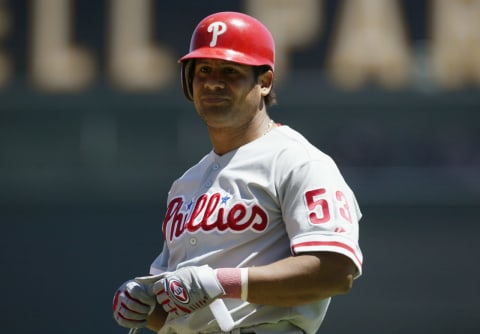
. . Bobby Abreu. 53. team. 6.
The face of the Phillies through the early 2000’s was none other than Bobby Abreu. Originally signed out of Venezuela by the Houston Astros, Abreu made his major league debut in 1996. Little did people know that he’d be a perennial .300 hitter with 30 home run power with an 18 year career.
In his first three seasons Abreu hit .321 with 520 hits, 27 triples, 62 home runs, 72 stolen bases, and hit no worse than .312 in any of those seasons.
After two years with Houston, Abreu was selected sixth-overall by the Tampa Bay Devil Rays in the expansion draft. Later that same day Abreu was traded to Philadelphia for Kevin Stocker.
In his first three seasons Abreu hit .321 with 520 hits, 27 triples, 62 home runs, 72 stolen bases, and hit no worse than .312 in any of those seasons.
He led baseball with 11 triples in 1999, but finished 23rd in the MVP voting that season.
Those seasons under Terry Francona were mediocre at best, and the clubhouse got a kick in the rear when Larry Bowa entered as manager in 2001. The team won 21 more games that following season with Abreu leading the team with 31 home runs, 110 RBI, and a .289 batting average.
That wasn’t enough to get them over the hump after a below-.500 second half, and the team finished two games behind Atlanta for the division title despite being 10 over .500 for the season.
Abreu made back-to-back All-Star appearances in 2004-5, and won the Home Run Derby in 2005, hitting 24 home runs in the first round and 41 overall, both records at the time.
At the trade deadline in 2006 Abreu was traded with Cory Lidle to the New York Yankees for C.J. Henry, Jesus Sanchez, Carlos Monasterios and Matt Smith. Abreu would go on to play three seasons with the Yankees before going to the Angels, Mets, and Dodgers.
Abreu attempted a comeback with the Phillies in spring training of 2014, but he didn’t break camp with the team.
Despite playing in one of the worst era’s in franchise history, Abreu retired as one of the greatest hitters in franchise history. His career numbers with the franchise are among the top-10 in WAR, OBP, slugging, OPS, doubles, walks, stolen base, and intentional walks. His OPS is only bested by Hall of Famer Chuck Klein.

team. 6. . . . Brad Lidge. 54
Brad Lidge provided perhaps the greatest single moment in Phillies history, delivering the final pitch in the 2008 World Series. His strikeout of Eric Hinskie is entrenched in fans memories as he delivered the first Phillies championship in 28 years and the first in Philadelphia in over two decades.
In that 2008 season coming from Houston, Lidge was not just good, he was perfect. He converted all 48 of his save chances that year and finished with a 1.95 ERA with 92 strikeouts in 69.1 IP during the regular season. In the postseason, he allowed just one run on five hits en route to a ring.
Lidge was never quite able to replicate the success of that 2008 season, but he remained a solid arm for the Phillies during their return trip to the World Series the following season.
The regular season did not go as he would have liked, as he blew 11 save opportunities. But he was an important part of the postseason run. Unfortunately, he only appeared in one inning of the 2009 World Series against the Yankees and gave up three runs along with hitting a batter.
Lidge bounced back when he was healthy in 2010, saving 27 games with a 2.96 ERA in 50 games. Injuries caught up to him, and the team opted not to retain him after the 2011 season.
Brad Lidge was an absolutely necessary piece of that last Phillies run of dominance. He and Ryan Madson provided a lot of wins for those teams and they were fun to watch. Lidge is always going to be a fan favorite and the symbol of the 2008 World Series Champions.
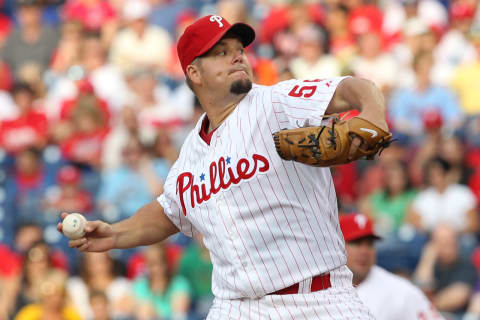
. Joe Blanton. 56. team. 6. .
Big Joe was the fifth-man in one of the greatest rotations of all-time, joining Roy Halladay, Cliff Lee, Cole Hamels, and Roy Oswalt. The rotation was always the five men, never a single guy or the four aces. Even in photoshoots focused around the four aces, they insisted Blanton be a part of it.
A first-round pick of the Athletics out of the University of Kentucky in 2002, Blanton won 42 games in his first three big league seasons and won double-digit games each year.
With Adam Eaton and Brett Myers struggling during the 2008 season, Pat Gillick traded three prospects to Oakland to acquire Blanton. On paper the move was puzzling considering Blanton was 5-12 with an ERA of nearly five. On the mound, Blanton would go 4-0 for Philadelphia in 13 regular season starts, and the team won nine of the games he appeared in.
Blanton made three strong starts in the postseason that year, allowing six earned runs and striking out 18 in 17 innings with a 3.18 ERA against Milwaukee, Los Angeles, and Tampa Bay.
Of course, Blanton will always be remembered for one postseason moment that wasn’t a start.
Blanton’s solo home run in the World Series sparked the club towards its first championship in 28 years.
The righty would pitch in parts of four seasons with Philadelphia following the championship, making 100 starts in his Phillies career with a 4.447 ERA.
Philadelphia would deal Blanton to Los Angeles in 2011 for pitching prospect Ryan O’Sullivan, who is no longer in the organization and never pitched beyond Double-A.
Blanton has since pitched for the Angels, Royals, Pirates, and Nationals as a starter and more recently a reliever with relative success.

. . Jonathan Papelbon. 58. team. 6.
One of the most hated Phillies in recent memory comes in as the greatest in franchise history to wear number 58.
There’s little to dispute in this discussion with the likes of J.D. Durbin and Jeremy Hellickson wearing this number. While one of the great villains of the Phillies collapse, Papelbon is the franchise’s all-time saves leader with 123, passing Jose Mesa at 112 in stunning fashion.
Papelbon arrived in Philadelphia for the 2012 season after a brilliant career in Boston where he left as their all-time saves leader with 219. The righty came with a unique attitude, insisting that his four-year $50 million deal included an extra $58 to satisfy his alter ego “Cinco Ocho.”
With a World Series and five All-Star games in hand, Papelbon came to Philadelphia as the savior for a bullpen that missed Brad Lidge at the backend and needed to replace Ryan Madson, who left for Cincinnati.
In his first season with the Phillies, Papelbon would lead baseball with 64 games finished, and a 2.44 ERA with 38 saves. For three seasons his ERA remained below three and he saved no less than 29 games a season.
In 2010 Papelbon was one of four pitchers to combine for a no-hitter in a game started by Cole Hamels, working with Jake Diekman and Ken Giles to seal the first combined no-hitter in franchise history.
Things began to go wayward for Papelbon in 2014, starting with a blown save in September at home when he allowed four runs in the ninth inning. While walking off the mound he made a lewd gesture towards the booing fans, and was suspended a week.
Philadelphia would trade Papelbon the following season to Washington for Nick Pivetta, a move that has worked out well considering where Papelbon’s career was going.
After several more instances in Washington such as throwing at Manny Machado and choking Bryce Harper in the Nationals dugout, Papelbon was left unsigned and has unofficially retired.
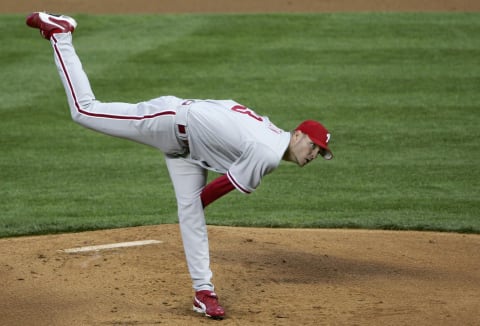
team. 6. . . . Ryan Madson. 63
Dubbed the “Bridge to Lidge,” Ryan Madson has come a long way through the Phillies organization. A ninth-round pick out of high school in 1998, Madson arrived in the big leagues at the age of 22 and in the inaugural season of Citizen’s Bank Park, he became a fixture in the Phillies bullpen.
More from That Balls Outta Here
- 11 Free-agent deals the Philadelphia Phillies wish fell through
- Phillies-Mets owners’ rivalry grows after shocking Carlos Correa deal
- Could Rich Hill become ‘Jamie Moyer 2.0’ in Phillies rotation?
- Does Bailey Falter have a future in Phillies’ rotation?
- Prospect Andrew Baker could help Phillies bullpen in 2023
In his rookie year Madson went 9-3 in 52 games, one being a start, with a 2.34 ERA anda 1.130 WHIP. Two years later the organization gave him a shot at the starting rotation with 17 starts, but a 5.69 ERA proved he resided in the back-end of the bullpen.
By the 2007 season, Madson settled into the bullpen role and became a critical piece of the most successful run in franchise history. En route to a division title, Madson had a 3.05 ERA and allowed only five home runs in 2007, and his success repeated as the set-up man in 2008 with an identical ERA.
Madson working ahead of Lidge in 2008 became a deadly combination for Philadelphia, and he earned 17 holds in that role.
When Madson and Lidge pitched in the same game during the Phillies 2008 season the team went 28-6.
During the 2008 postseason, Madson had a 2.13 ERA in 11 games, 10 of which were won.
Success carried over beyond the championship for Madson with a 2.55 ERA in 2010 and 2.37 in ’11. With Lidge ailing during the 2011 season, Madson saved a career-high 32 games before departing in free agency.
Next. Ranking Every Player for the 2008 World Series. dark
Injuries kept Madson out of baseball for three whole seasons, not throwing in a game until 2015 with the Royals in their championship season. He’s since pitched for Washington and Oakland with tremendous success, and is currently on the Nationals 40-man roster with an injury.